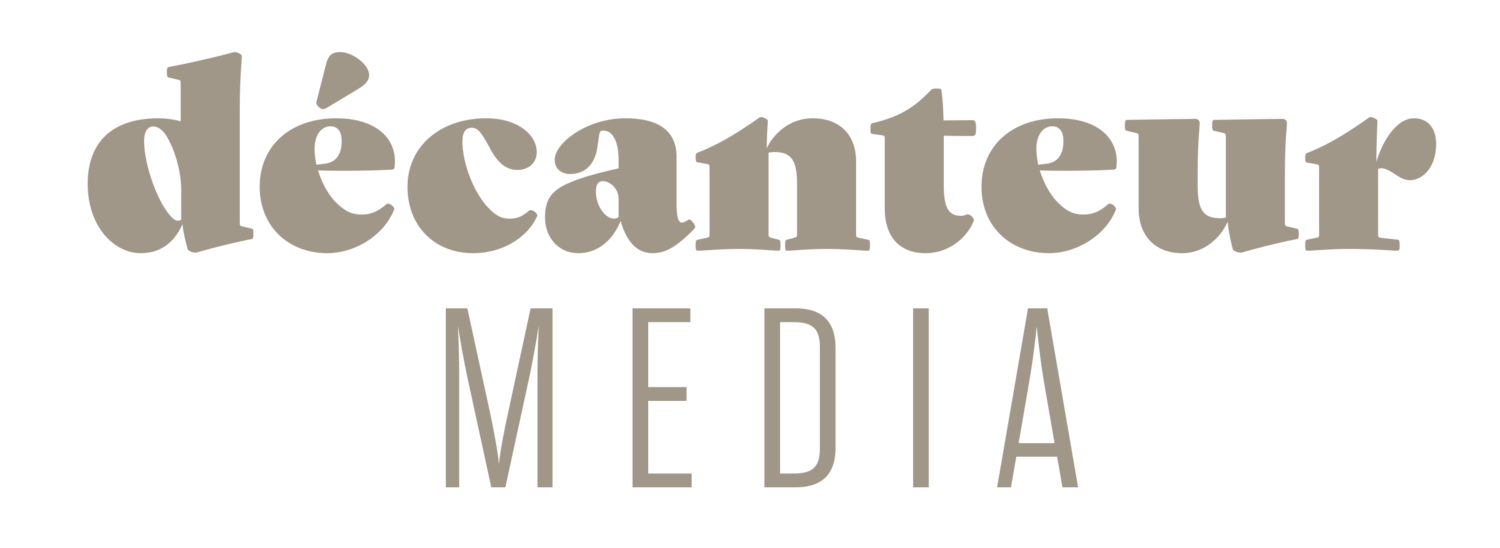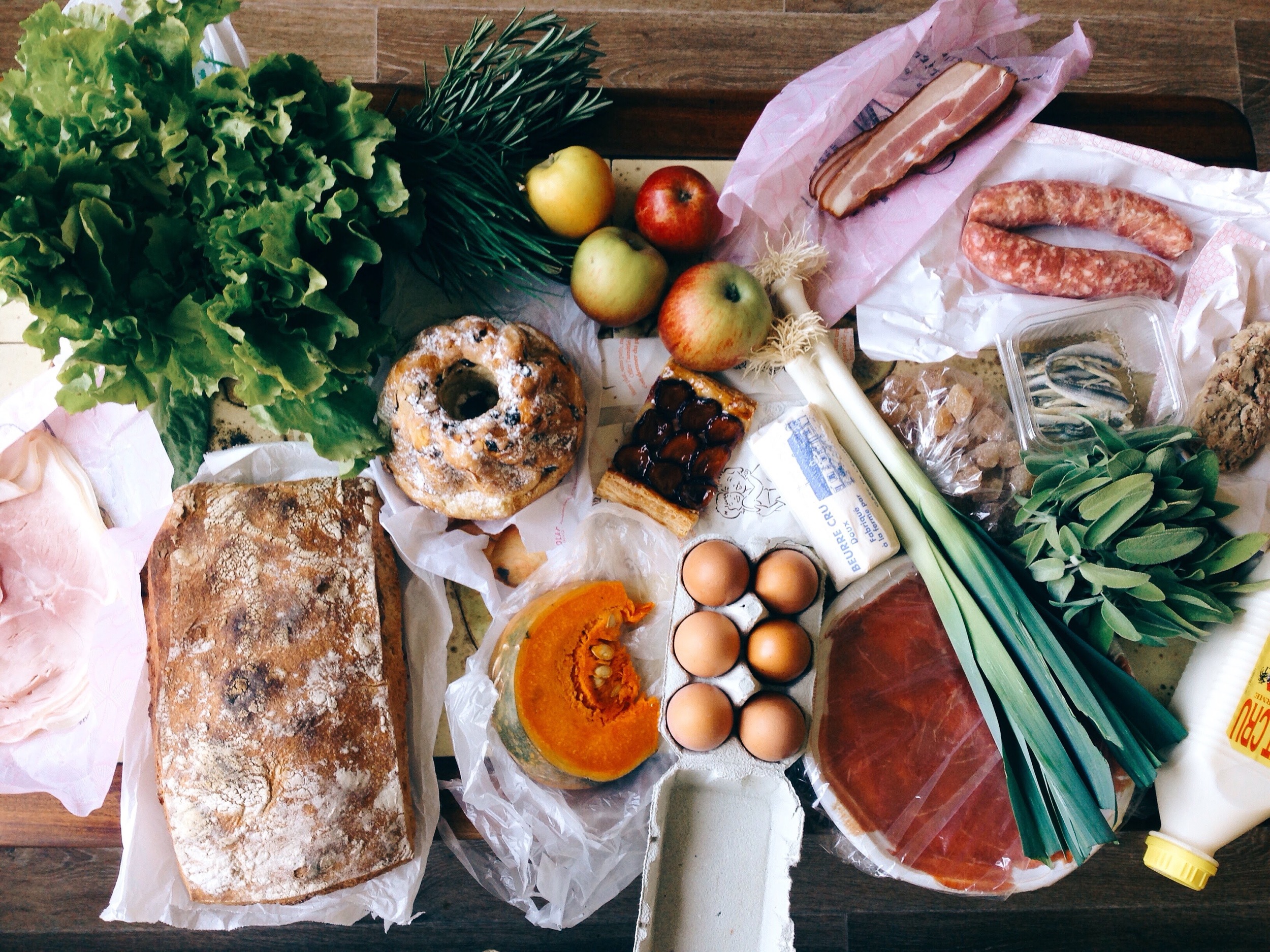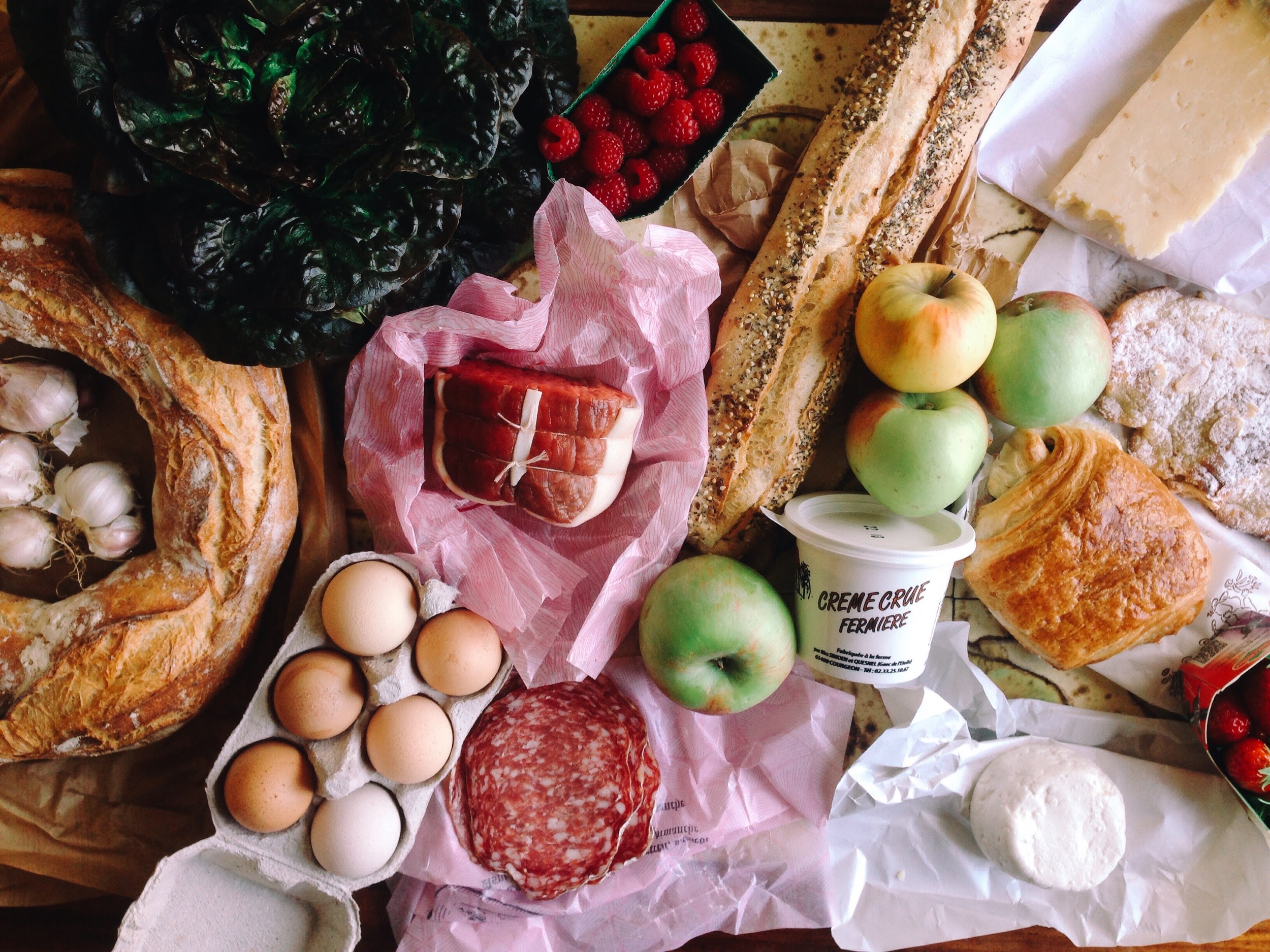Sunday is my favorite day of the week, because Sunday is market day. I roll out of bed, throw on jeans and my black Adidas, maneuver my bike into the elevator and start pedaling towards the Mairie d’Asnieres, where the covered market is held every Thursday and Sunday morning. As a foreigner living in Paris, I’ve discovered that developing routines and rhythms is the easiest way to carve out a home for myself here. In a place where I have absolutely no point of reference, creating my own habits is what anchors me. My market ritual is something sacred, my form of Sunday worship, and my week just doesn’t feel complete without it. The infatuation I have with the Sunday market is partly because of the beautiful bounty of French food. I crave the smells and sounds of the market - whole chickens roasting on spits outside under tents, the choucroute steaming in silver pans, a kaleidascope display of French cheeses in all shapes, sizes, and colors; huge chunks of ruby red beef being hacked into pieces by the butcher; whole rabbits stretched out on their backs, pig heads with gaping toothless mouths and empty eye sockets; chickens with limp necks and open beaks; bread stacked nearly to the ceiling; vegetables tumbling from tables, young men with stubble cutting apples and oranges and avocados to tempt customers into buying. The rush and crush of the market is exhilarating, the array of fantastic foods is mouth-watering, the juxtaposition of oddities and delights so intriguing you never want to look away. It is because of this market that I know I’m ruined for life when it comes to butter, fresh goat cheese, and terrines. I crave the raw milk, small farm eggs still plastered with little downy feathers, fresh cuts of meat and an endless variety of cheeses. I’ll never be able to find such a distinct collection of delicacies in the U.S. because they have long ago died out and been reborn as expensive, artisanal, pretentious expressions of their original selves. But the market holds such a special place in my heart for more than just the food - it’s also about the people. It’s a way for me to connect with a community in which I often feel an outsider, a way to give myself context and feel belonging. Over food, people connect in a way that is entirely unique and quickly intimate. I look forward to this feeling of connection, to seeing the people that have developed into something closer to a friend than a vendor. And the reason why the market facilitates this kind of bond is because, unlike a clerk or cashier, these people are deeply embedded in the food they are selling. The goat cheese man who always makes sure to ask me how I am and noticed as my accent smoothed out makes the fresh goat cheese with his own hands, and drives from his farm every weekend to sell it. The man who carves off slices of pumpkin for me and chooses the crispest apples has hands crusted in dirt from working in the field. The guy who sells me bread and loves to practice his English with me has flour on his face from a morning of baking. These are the people who care about food, and when you care too, a kind of closeness is born. The market is how I orient myself in a world that I often feel lost in. It’s how I carve out a sense of belonging, create a home in a foreign place, and connect with those who understand this place to its roots.
Château de Versailles, encore
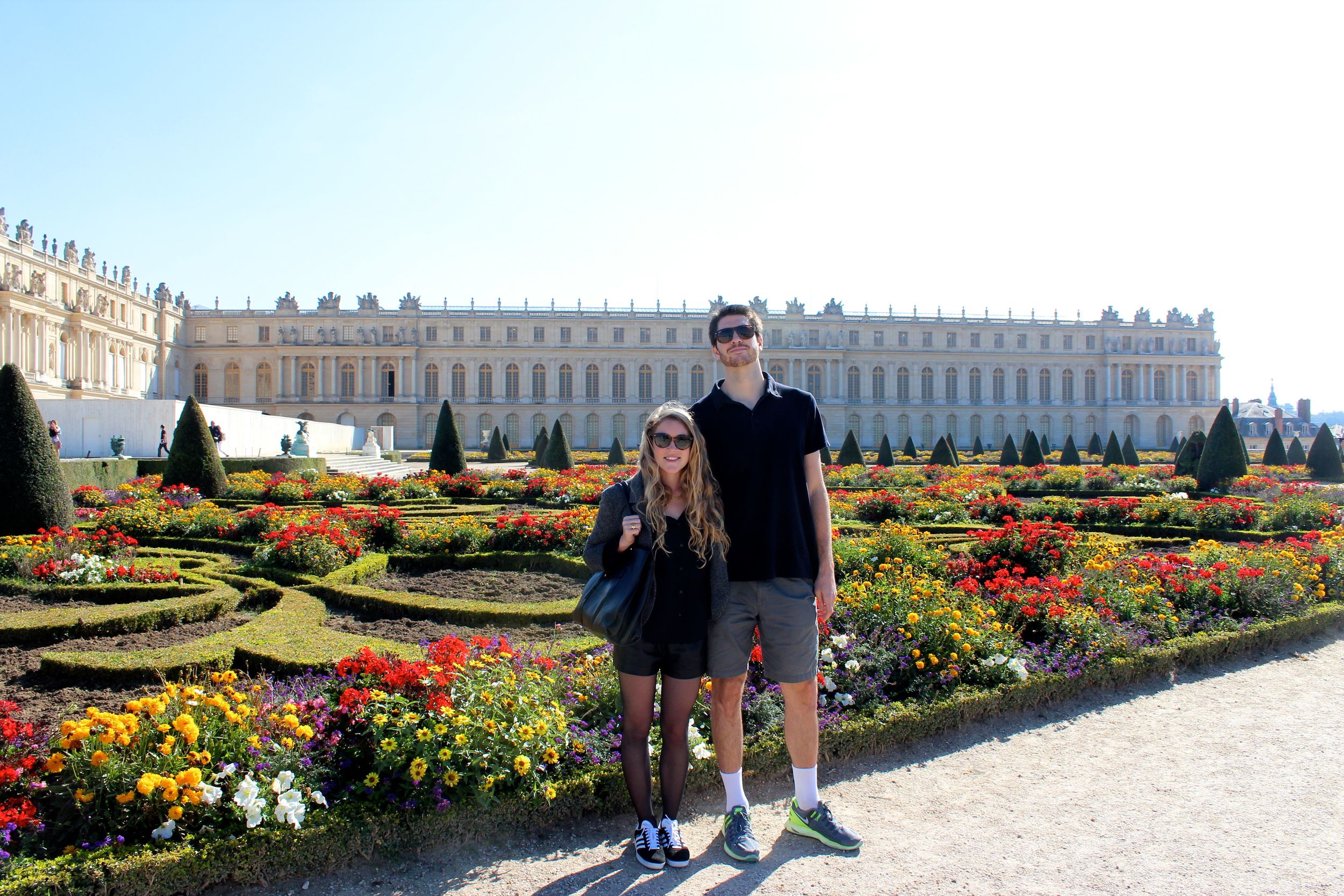

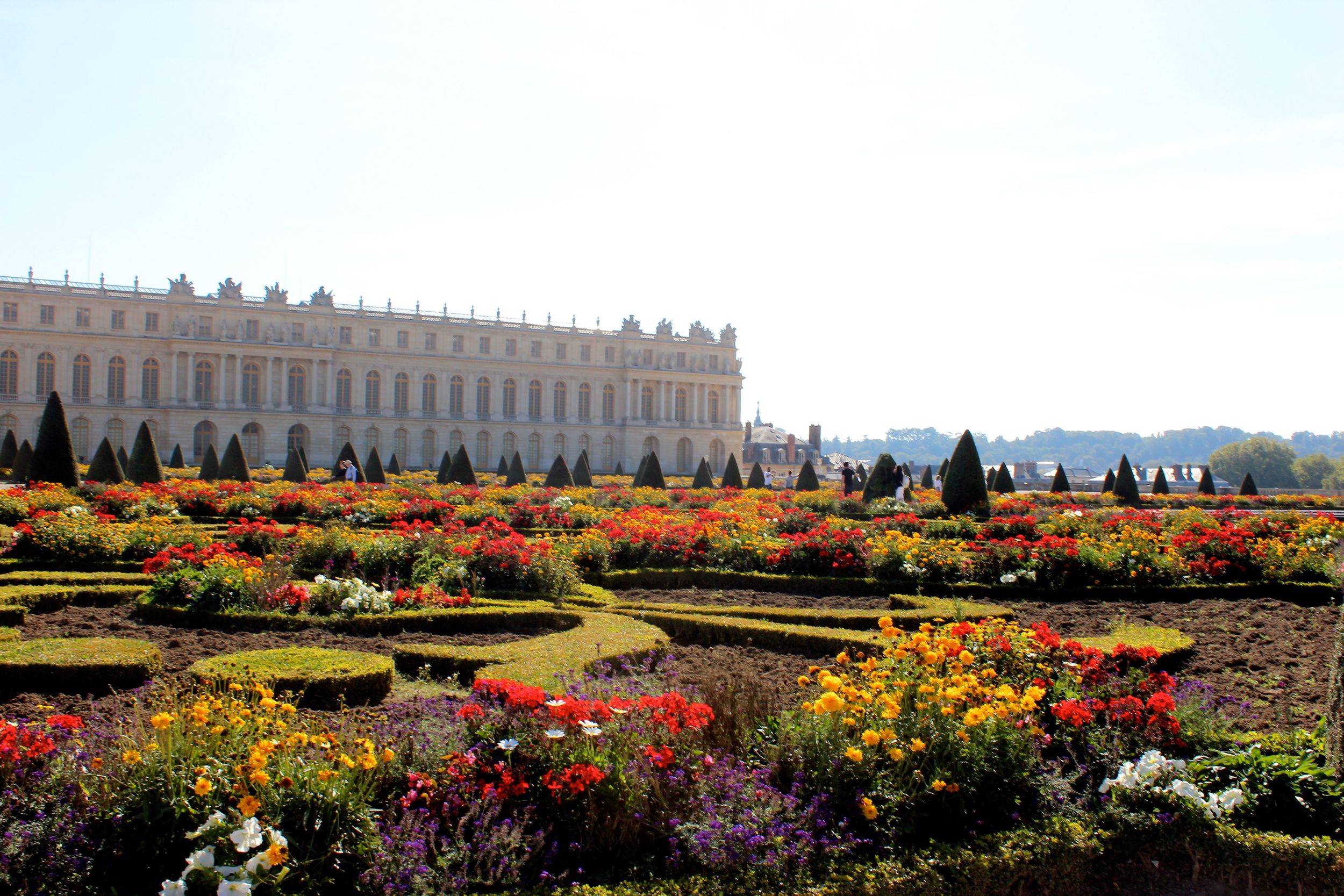
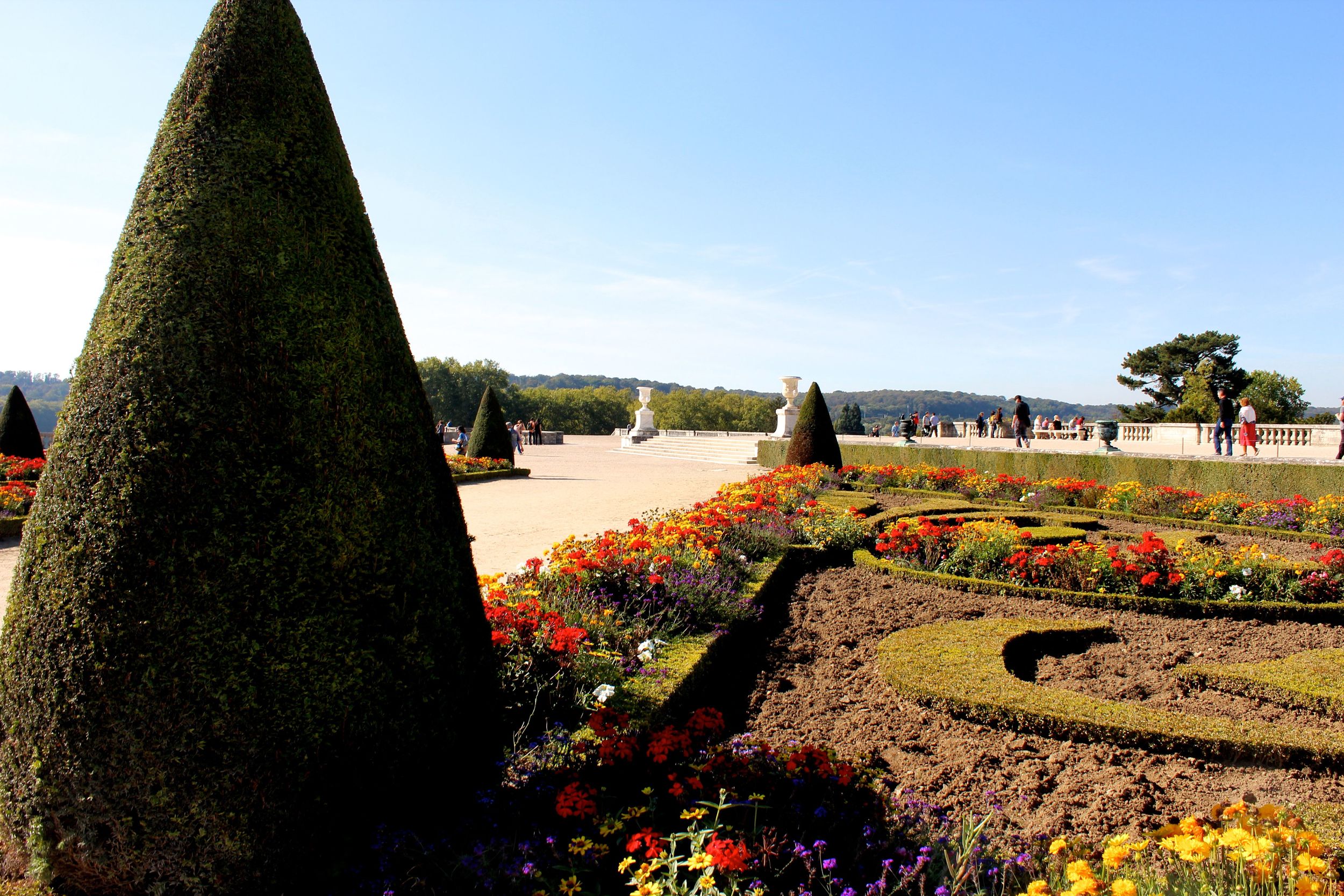
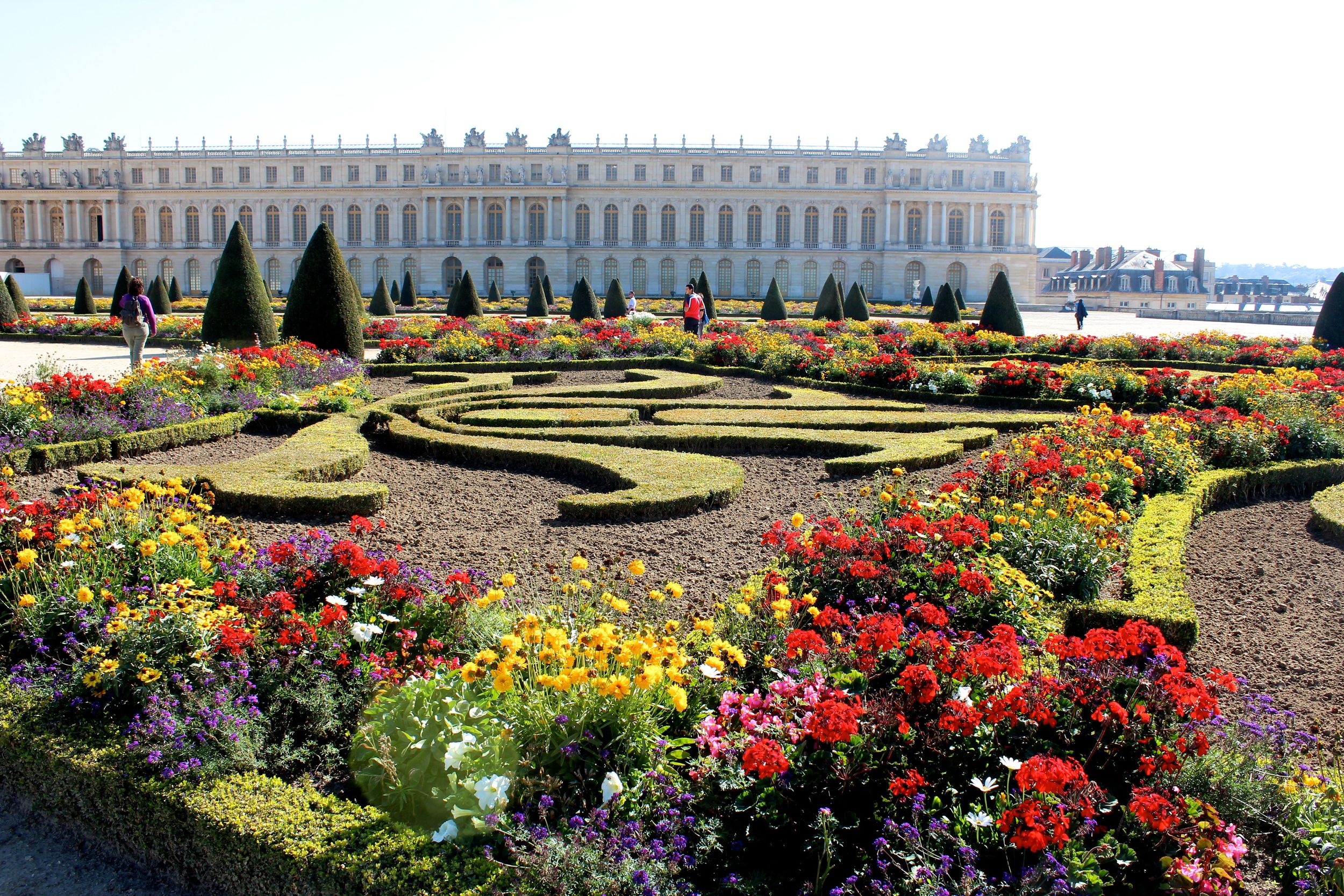
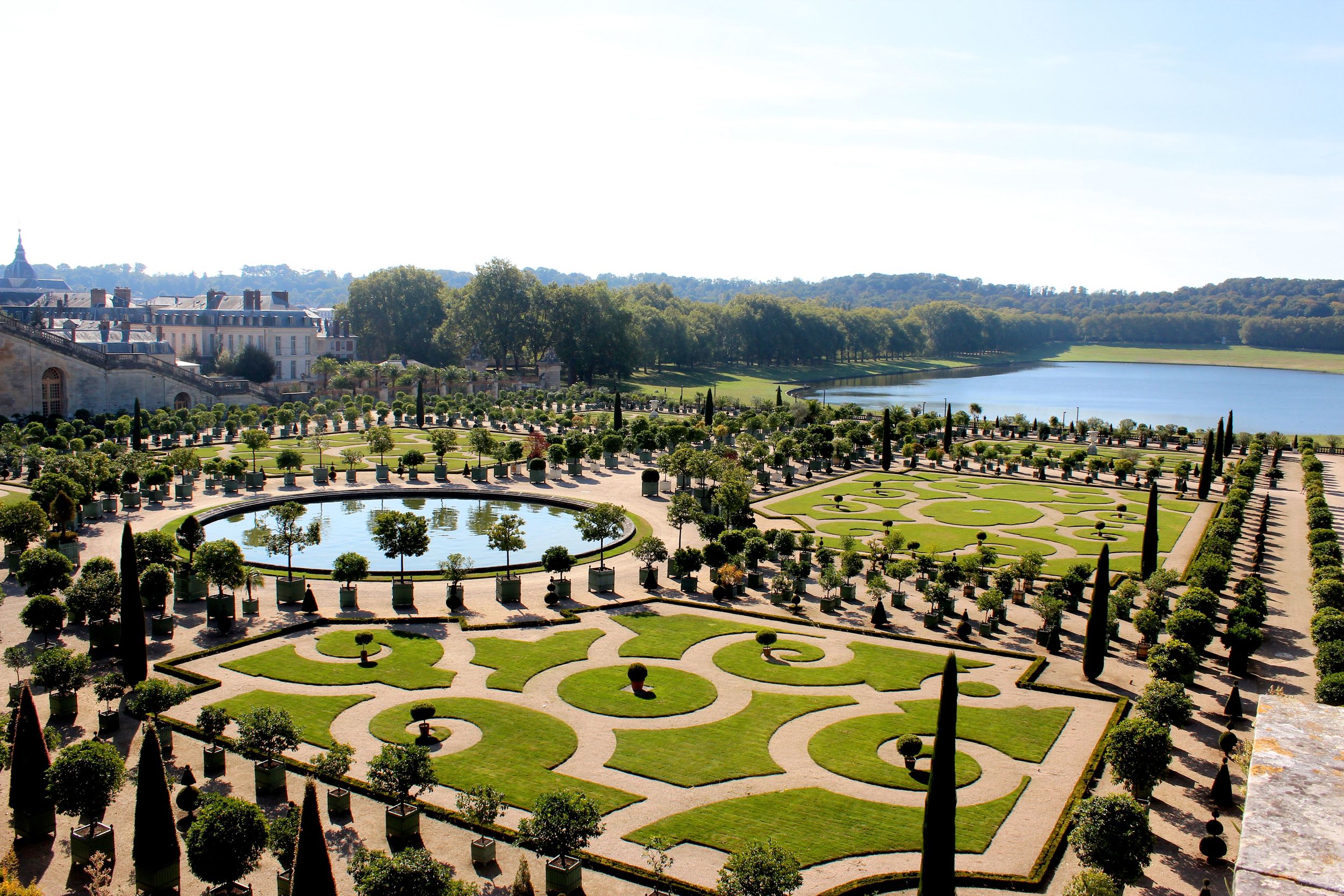
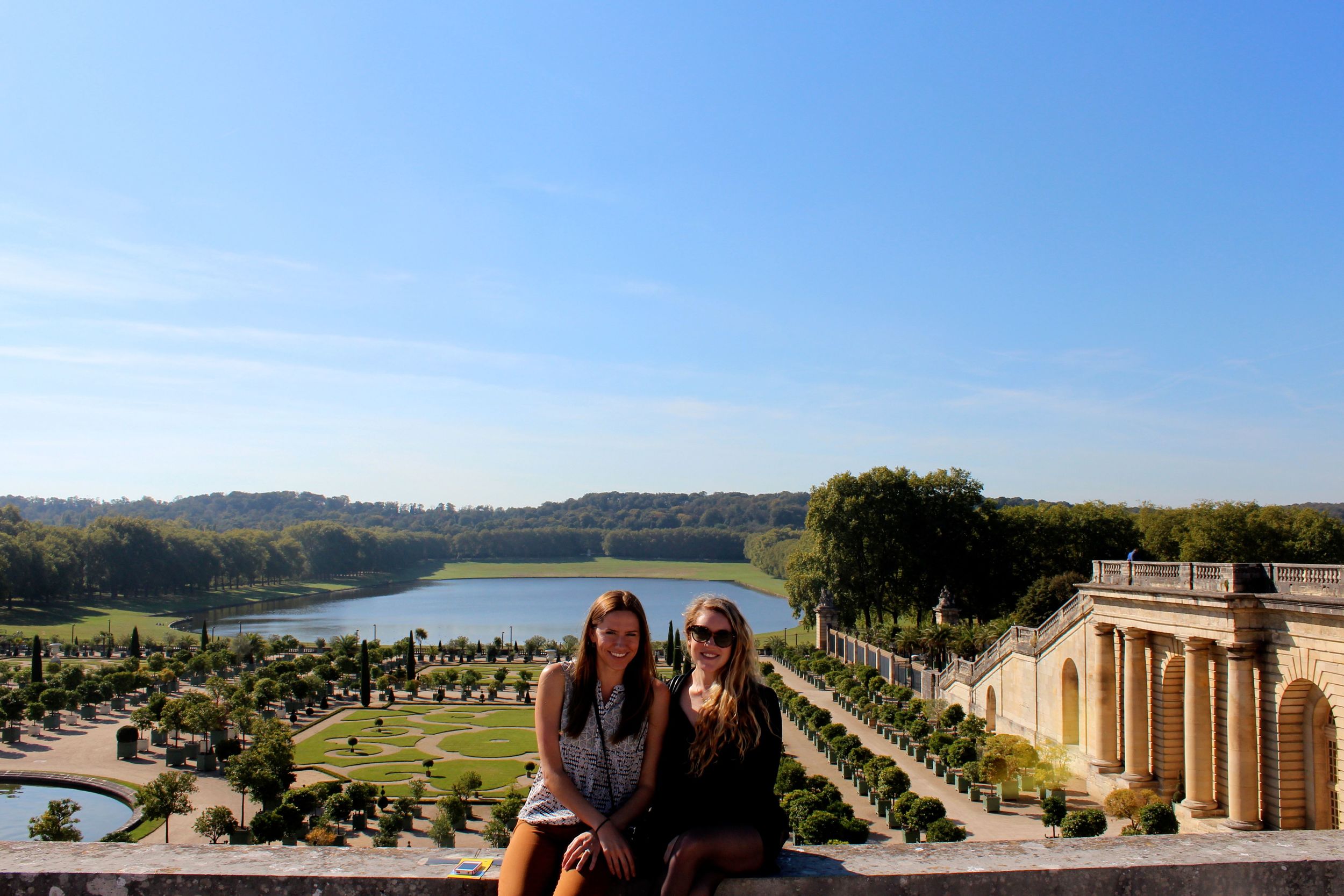
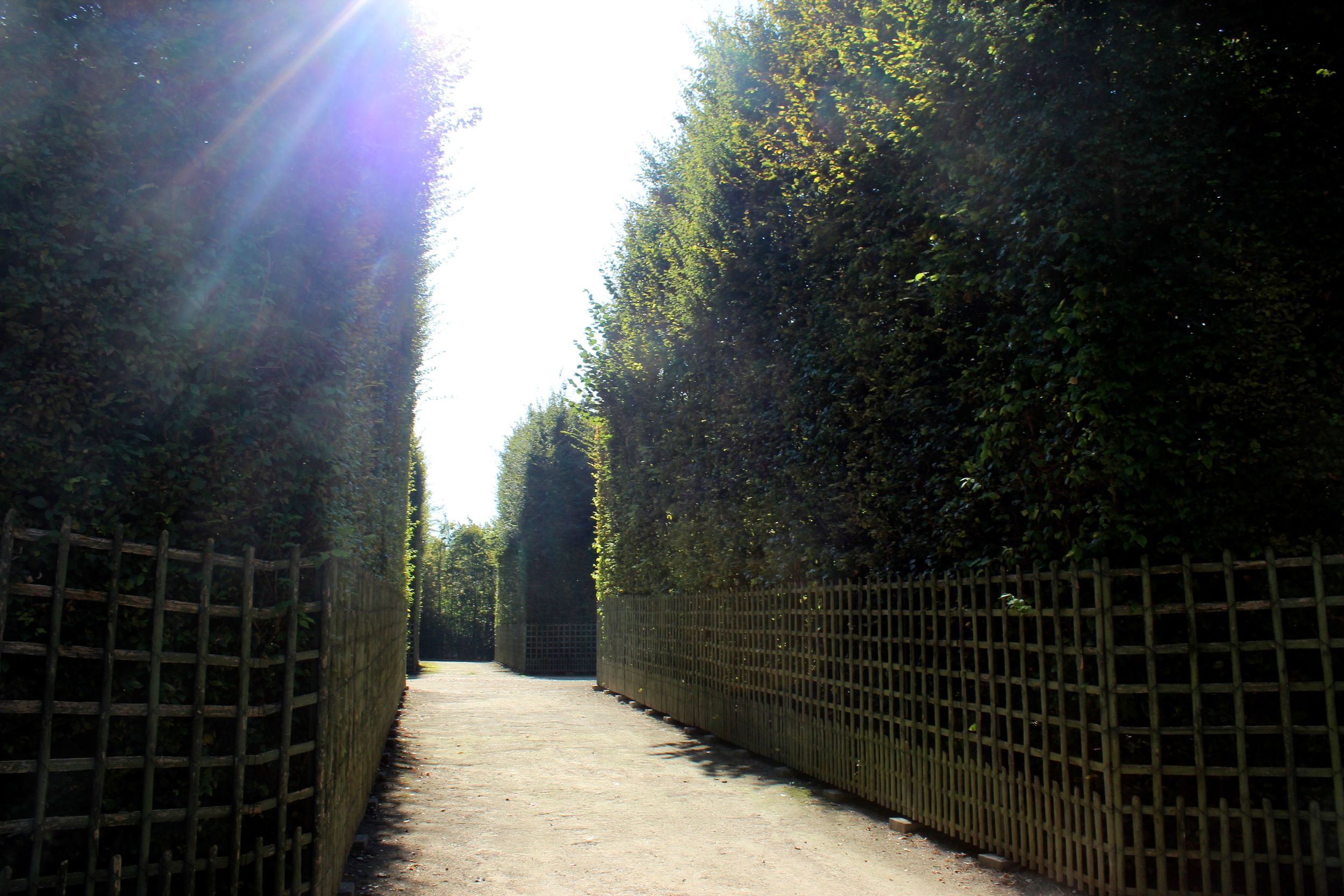
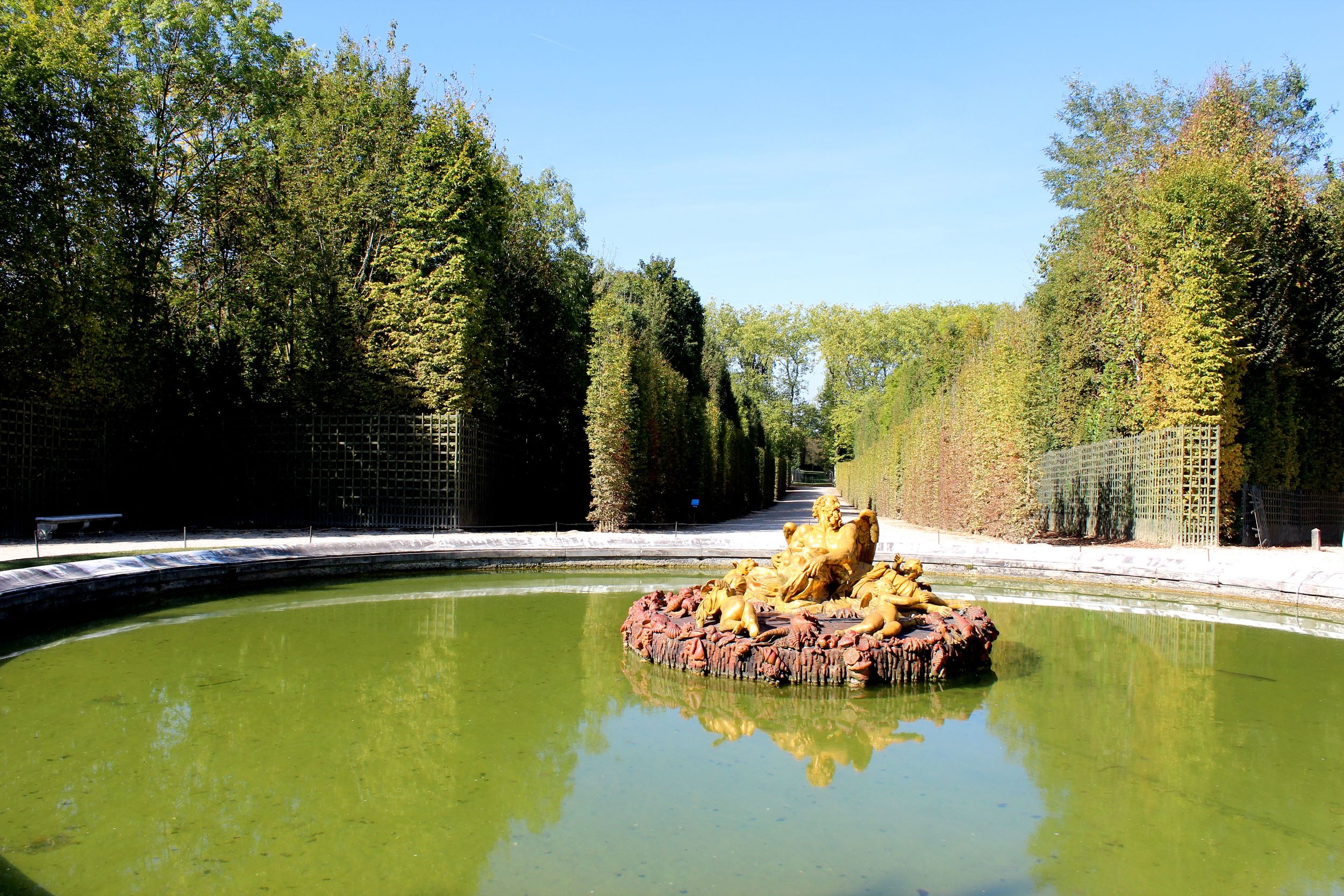
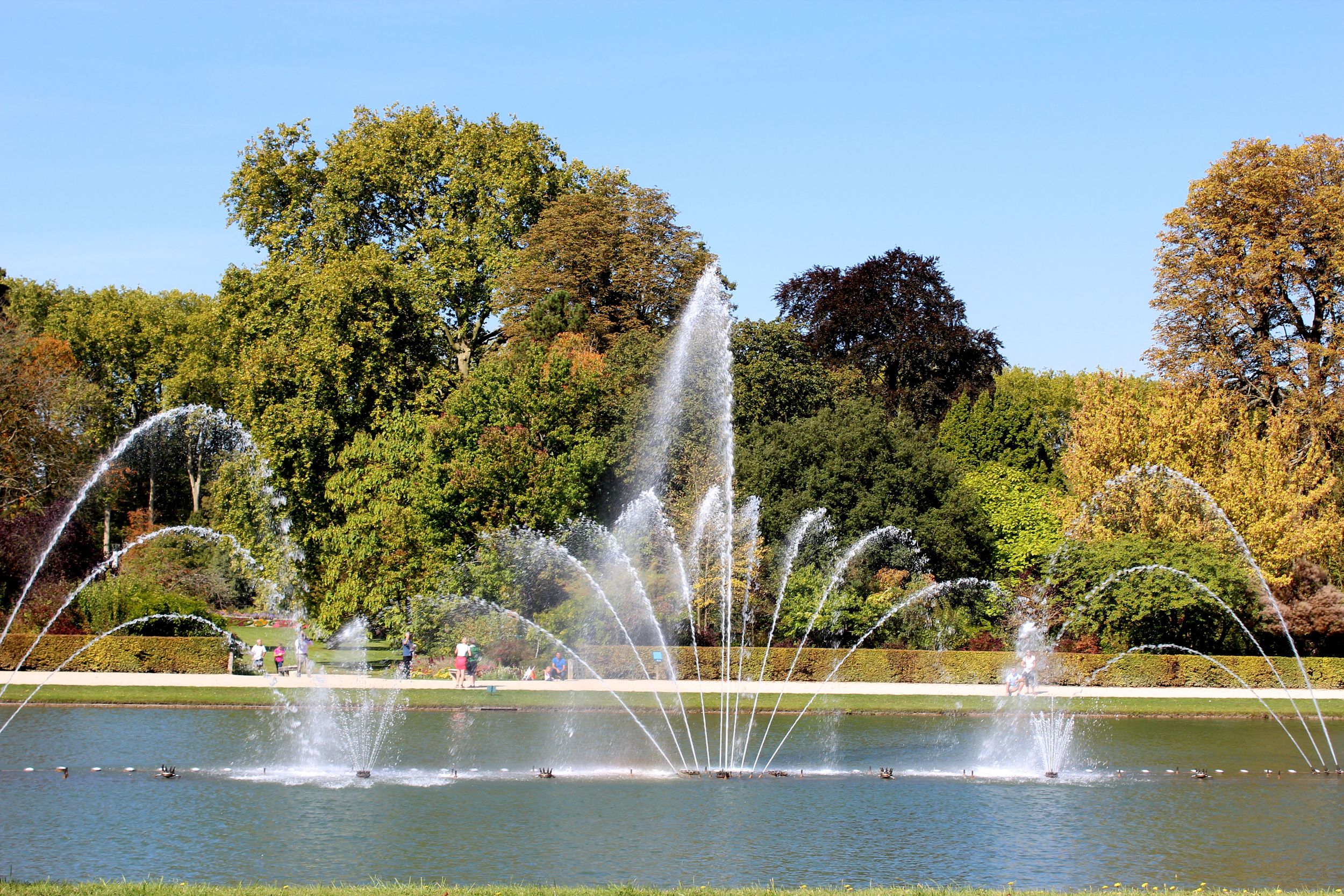
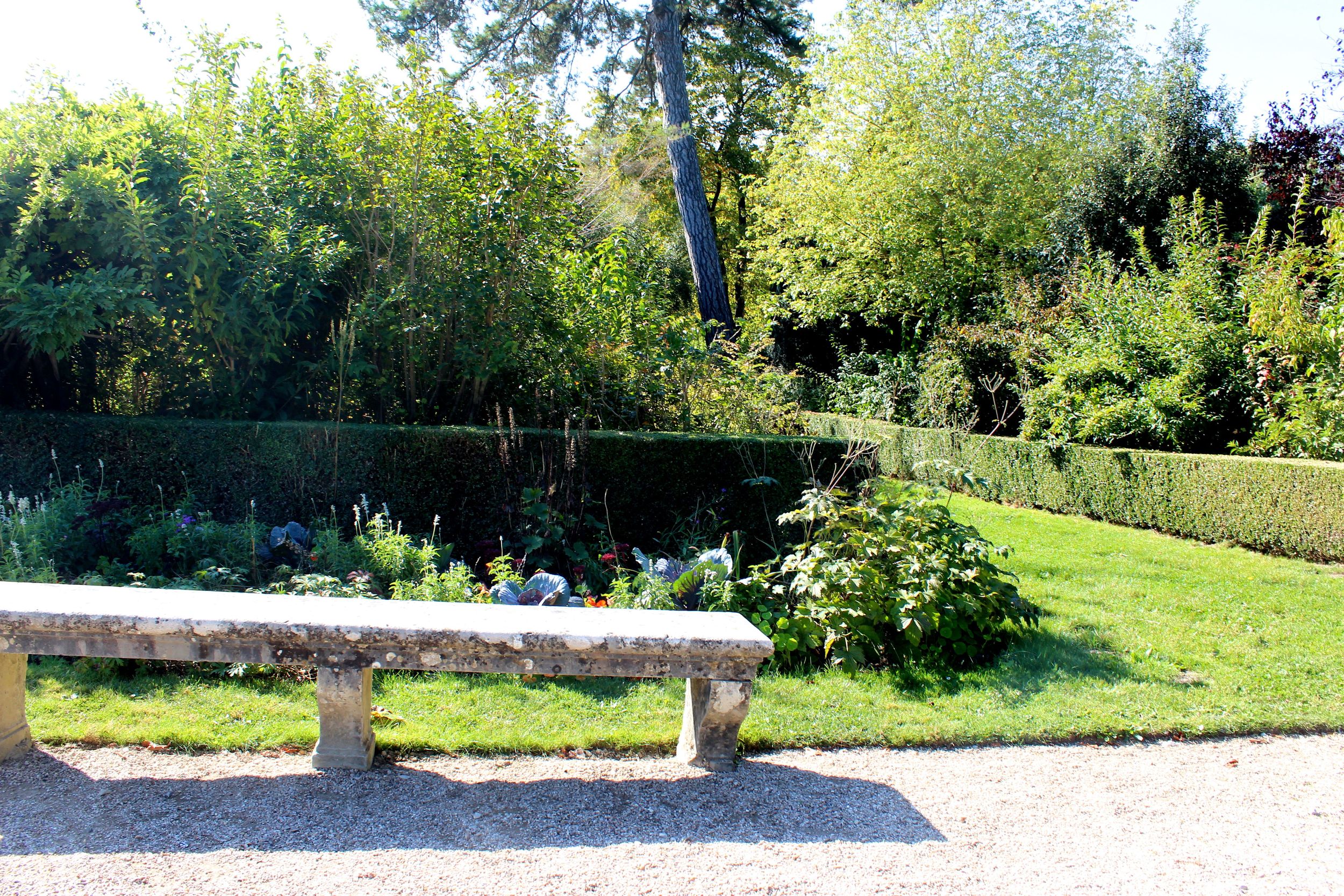
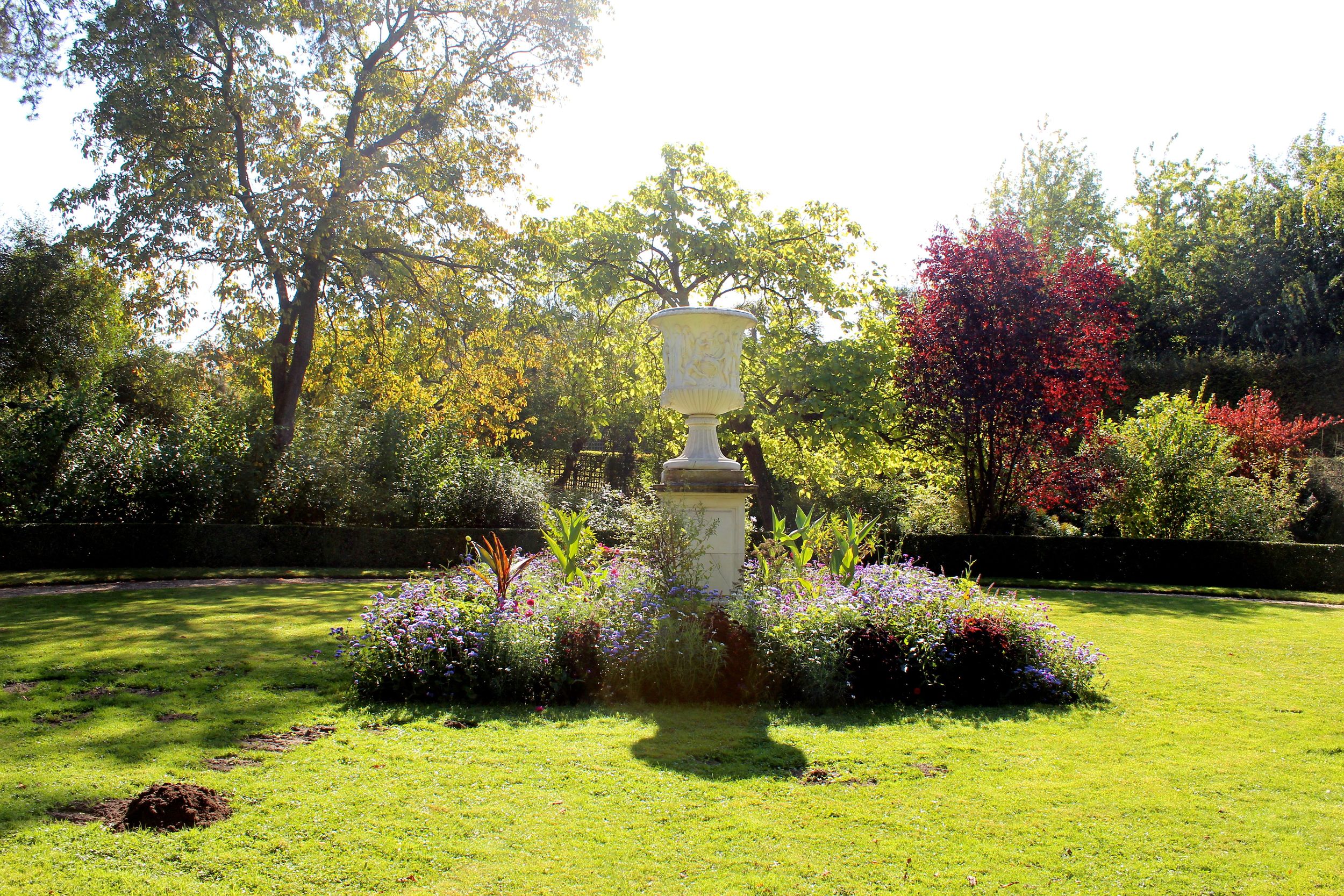
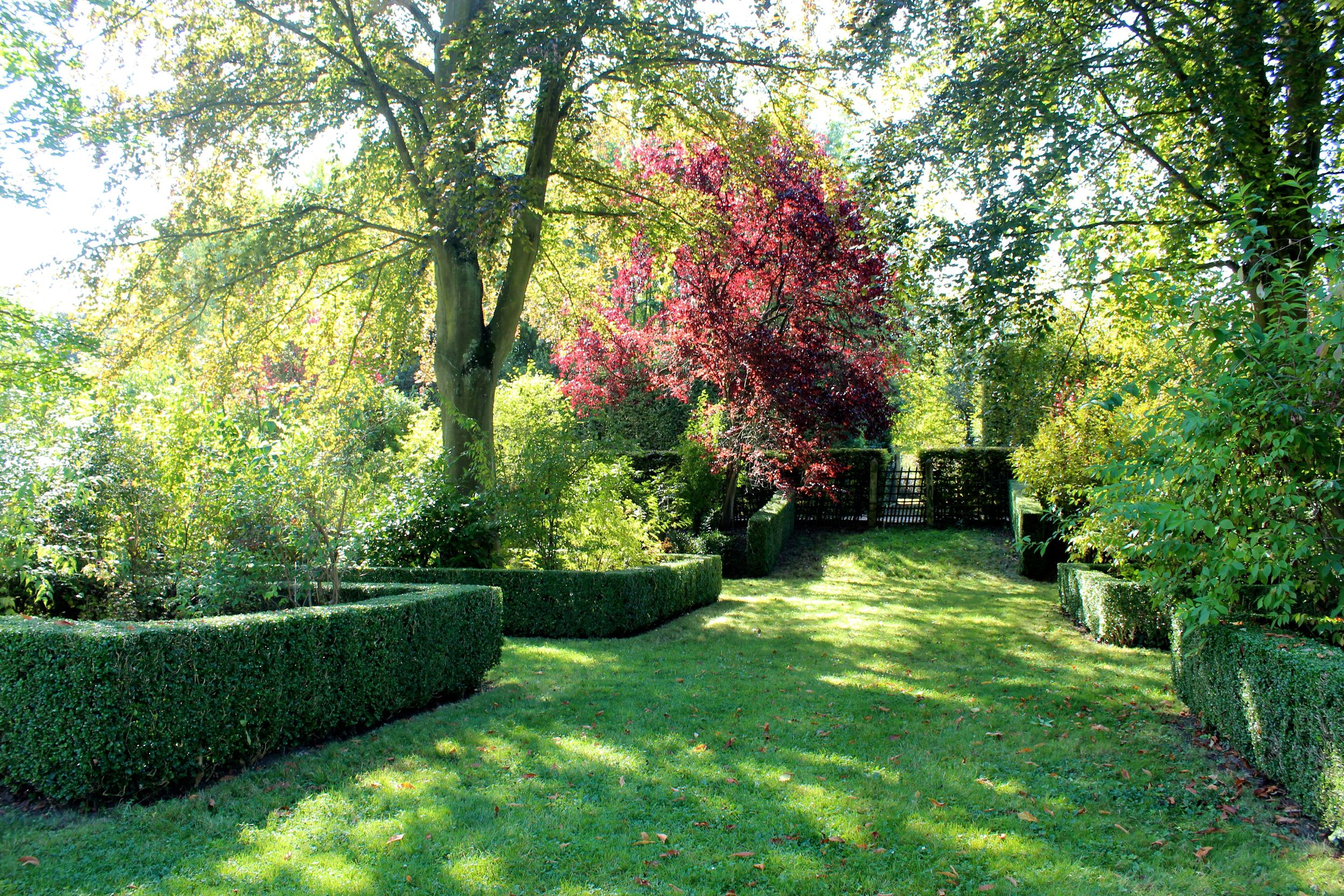
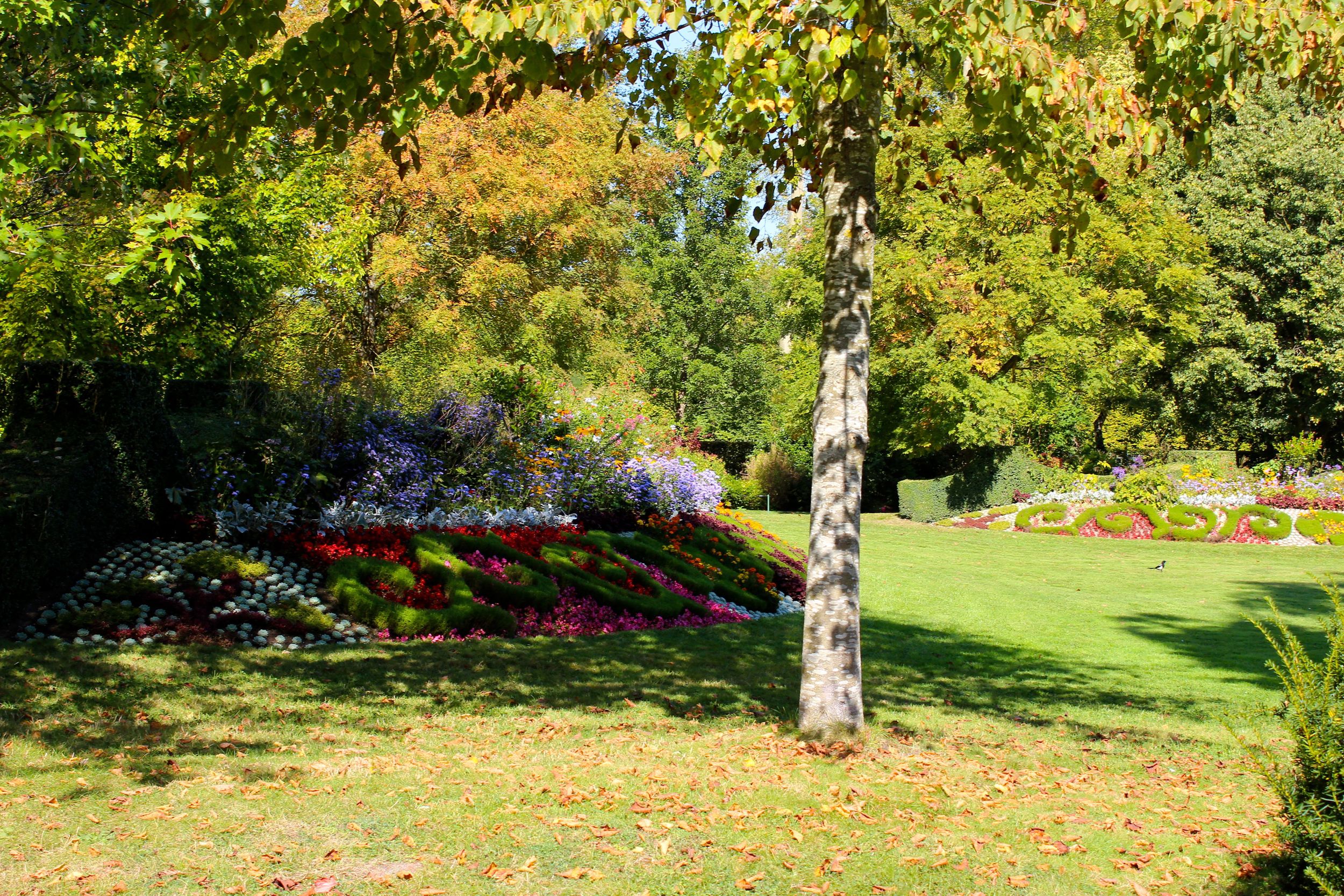
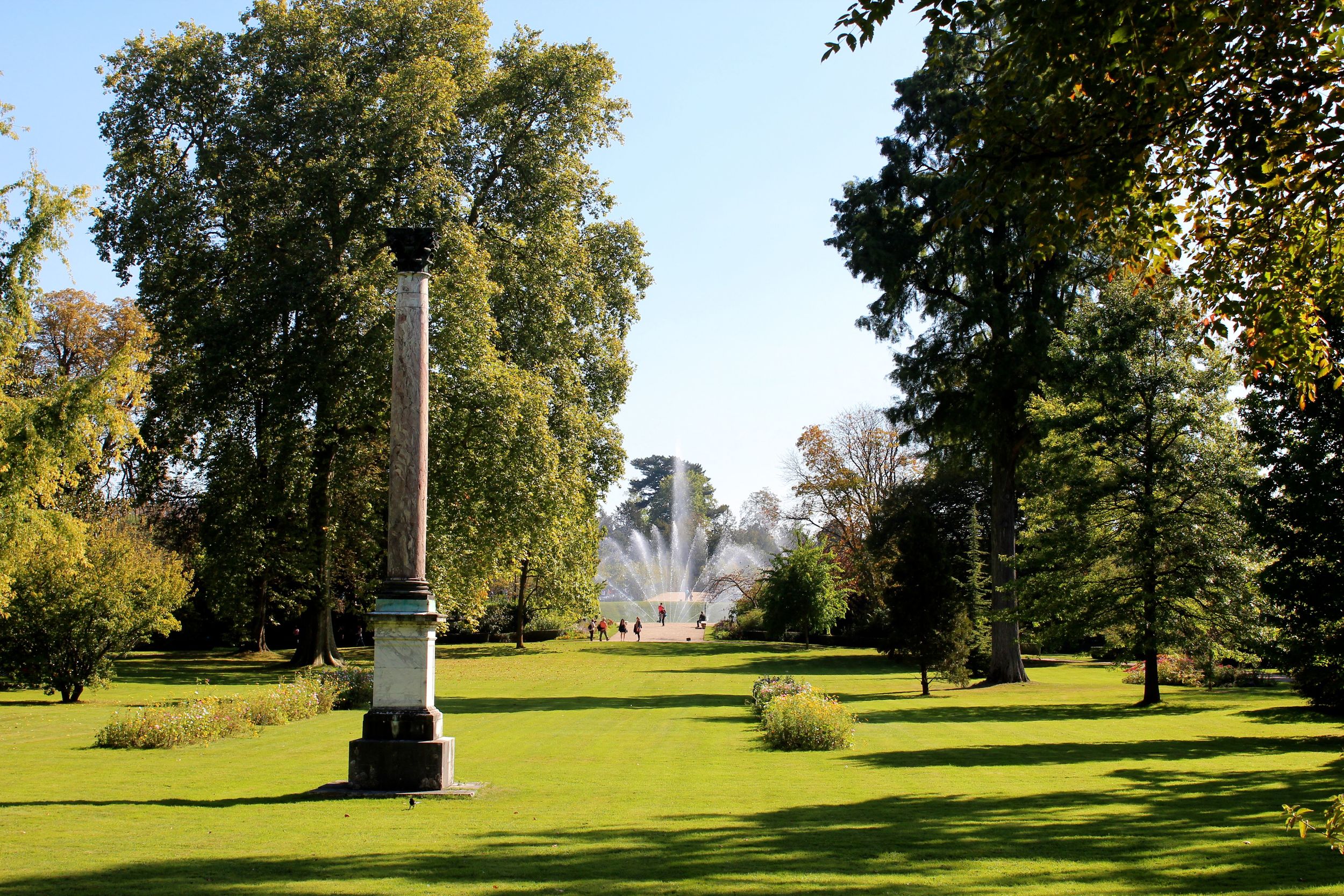
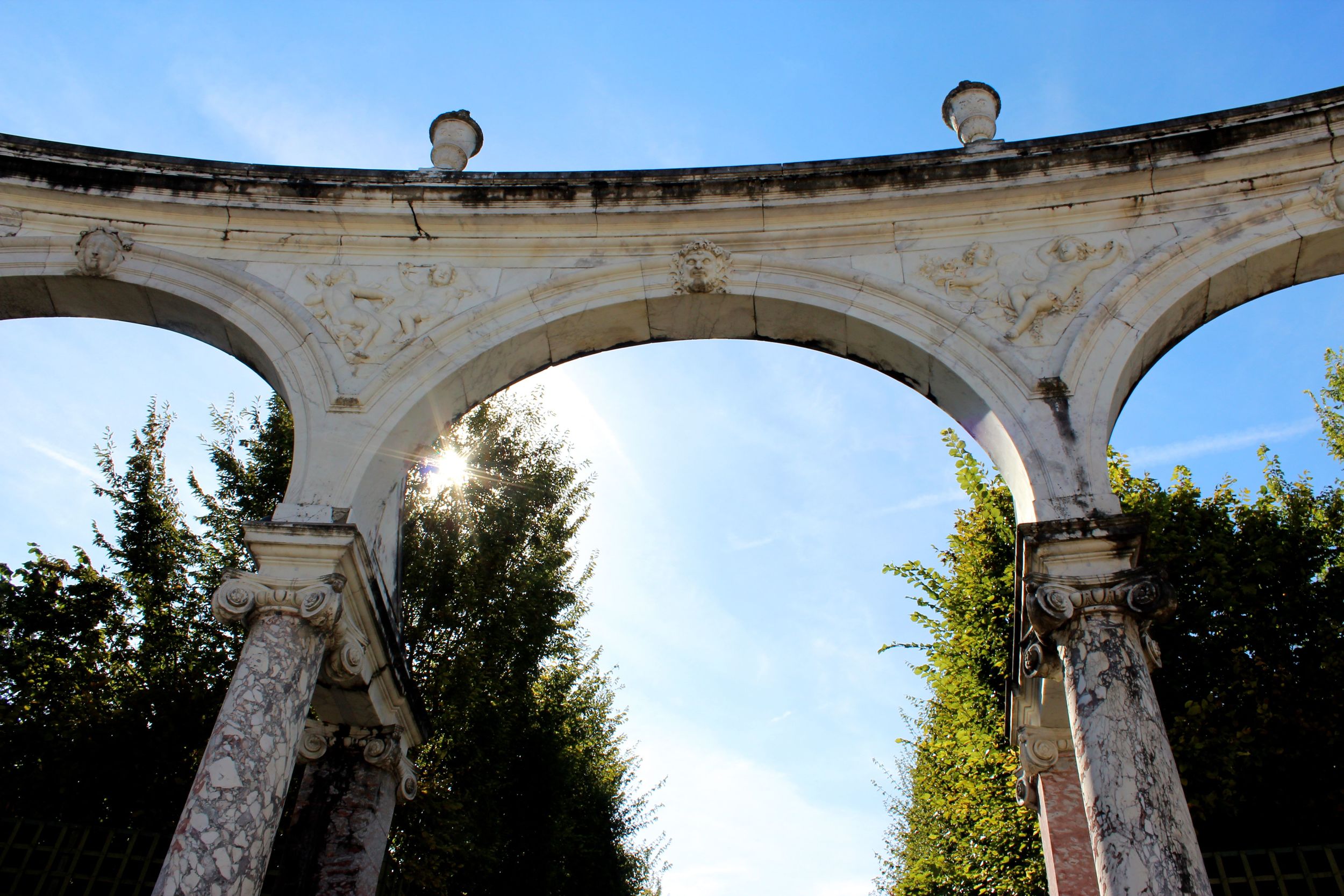
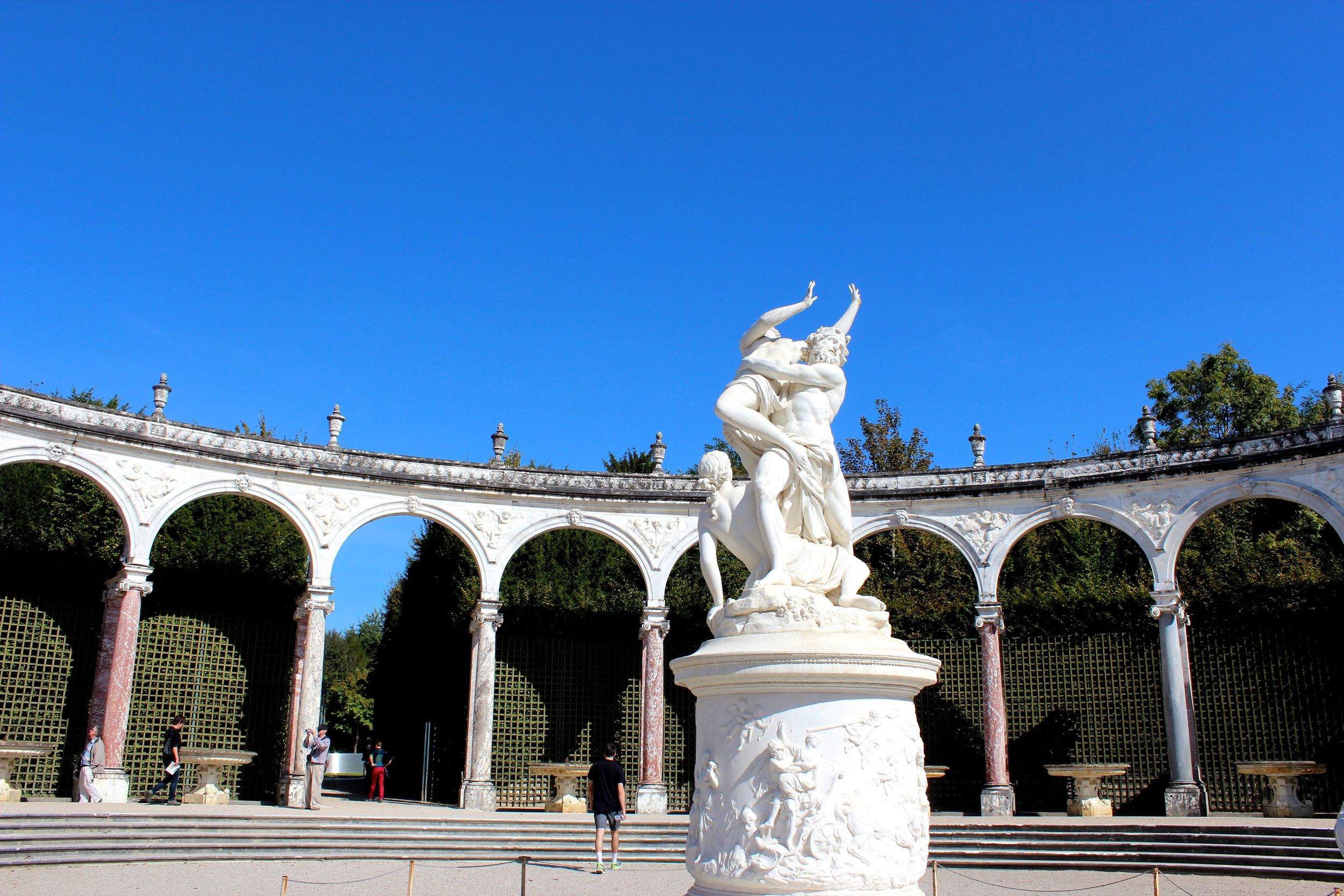
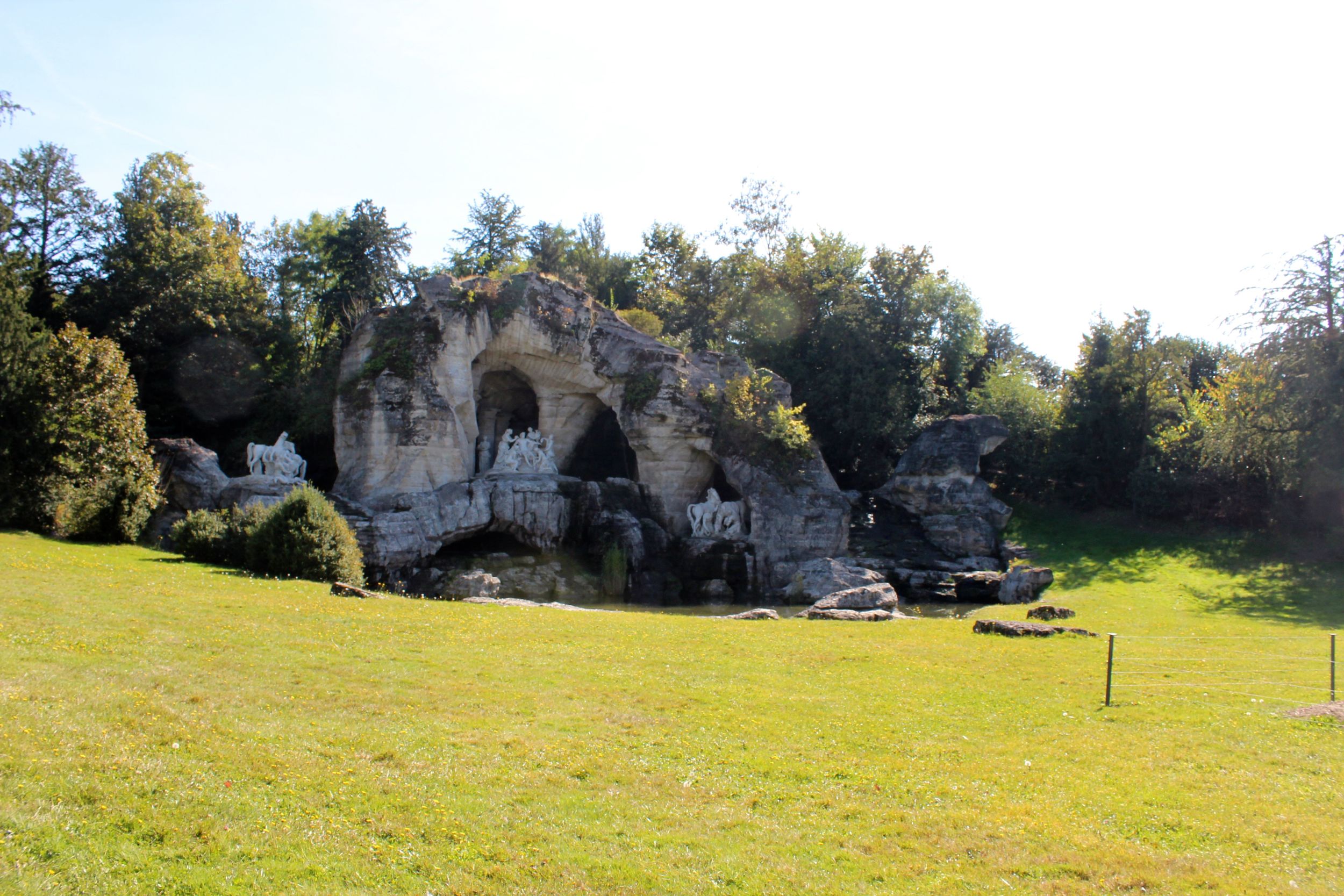
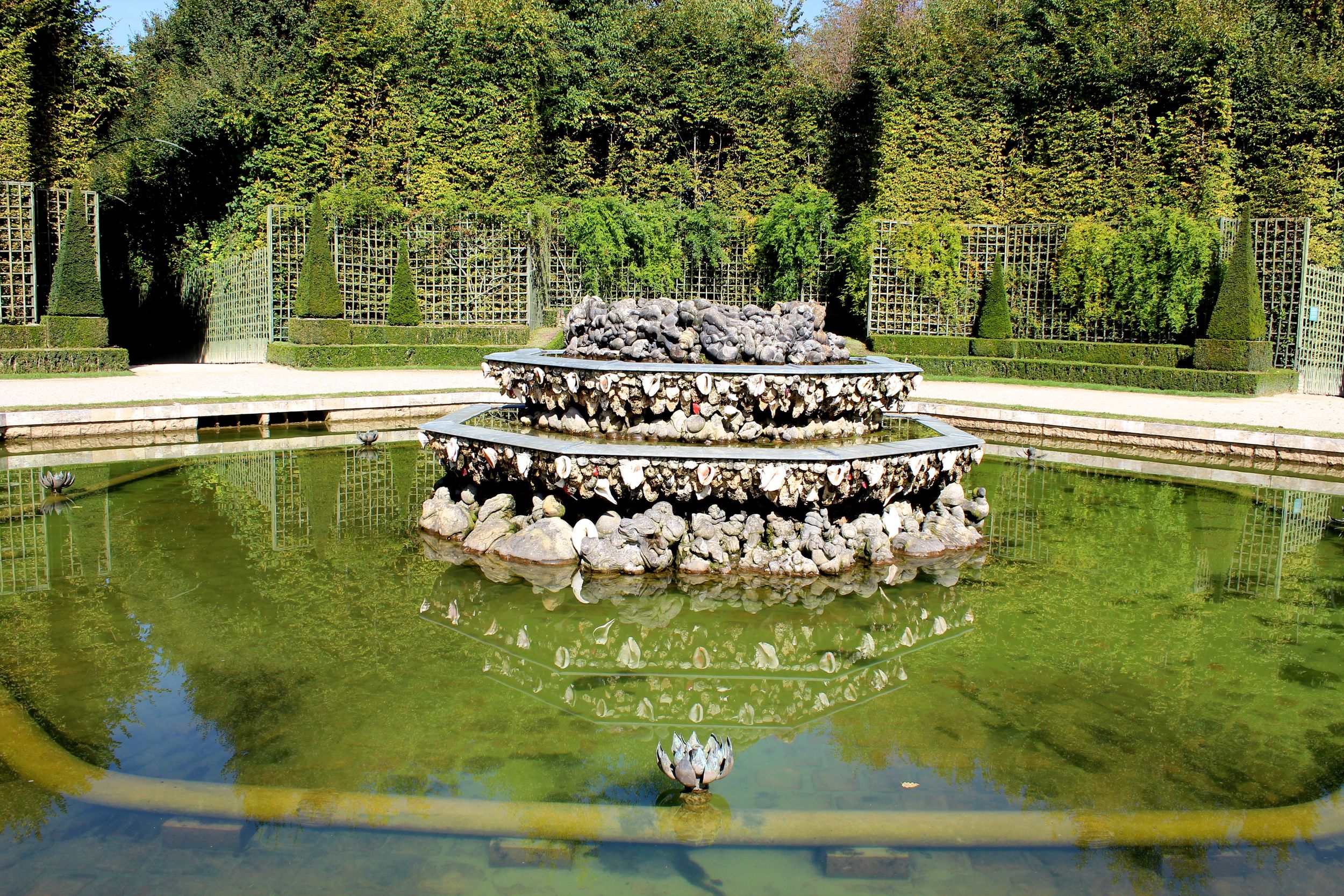
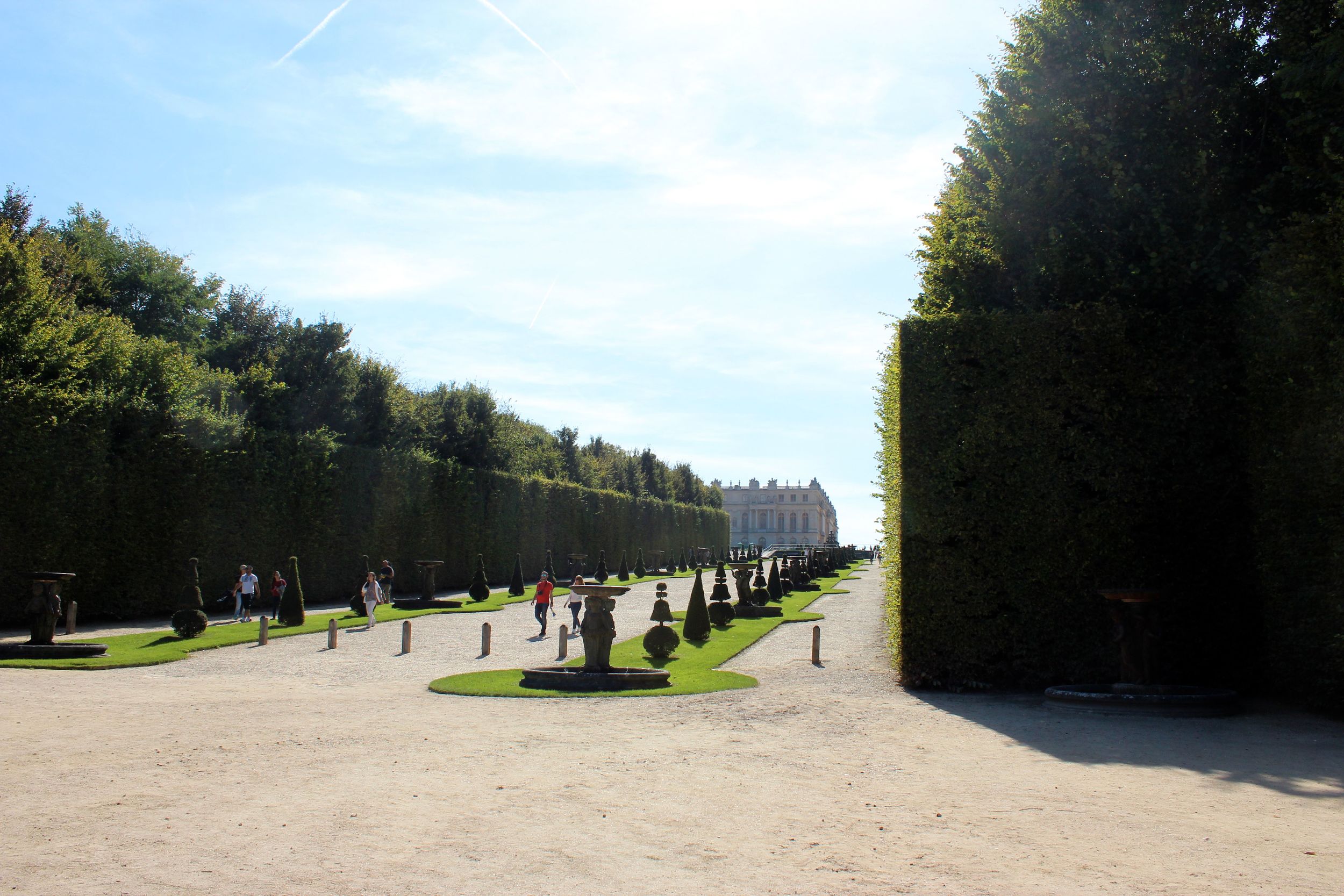
My first visit to the Palace of Versailles was last year, on the first Sunday in November. It was cold and windy and the flowers were all dead, the trees skeletal and bare, the grounds lush with mud and deep green topiaries, statues cold and stark. My most recent visit came earlier in a warmer autumn, and the grounds were still in full summer tourist season swing. This meant opulent fountain shows, beautifully manicured landscaping, bright sprays of colorful flowers, and a slightly-odd-slightly-amazing Baroque soundtrack that echoed all throughout the gardens. The weather also meant that we could delve deeper into the gardens and see more of what was once a display of French aristocratic power and is now a display of French cultural superiority. As I was the first time I saw the palace and its grounds, I was blown away by the opulence and expansiveness of it all. But this time, with a bit more of a knowledge base on French politics and history, I imagined Versailles not from Marie Antoinette’s perspective, but from the perspective of the gardeners, groundskeepers, servant girls, and guildsmen that worked there. I thought about the extravagant feasts the aristocrats used to have, served plates and plates of dishes cooked by chefs that would eventually establish the legacy of French cuisine, in front of an audience in order to display their wealth and status. When the revolution ended, these chefs were released from their monarchical duties, and the French restaurant was born. The history of the storied French restaurant began in revolution, as so much else in French history, in an attempt to bring aristocratic finery to the masses. There’s a bit of an insight on French culture for you – finery and sophistication as a national right.
Tartines
I’m not sure if “tartines” are French, or if they were invented by Americans in a marketing ploy to make things on toast seem fancy and imported. In any case, they are popular here, and come with so many creative ingredients which (unlike French pizza…who puts tuna and corn on pizza?) are always delicious. My favorite flavor combination is the salty sweet conundrum, especially when the sweet comes from fruit. Pinterest might be all about avocado toast right now, but here in France (where avocados aren't quite as abundant as they are in California) I’m thinking more along the lines of pears, figs, fresh cheeses, vinegar and honey; something a bit lighter and sweeter to snack on during a slow Sunday afternoon or before a dinner party.
The determining factor in a good tartine is the bread. Excellent bread is a necessity, in all of life but especially for tartines. And that good bread should always be toasted, unless you want soggy tartines! I started with a small loaf of pain des amis from the Sunday market, and went from there. I’m also lucky enough to live in Paris, where there are cheese mongers (yes, really) selling fresh cheeses at the Sunday market. If you’ve got good cheese and good bread, anything else is just a bonus.
Sunday morning market spoils {clockwise: pain des amis / pâté grand-mère (pork terrine) / figs / fresh goat cheese / girolle (chanterelle) mushrooms / chocolate truffles}
These are two of the tartine recipes I've been using most lately, mostly based on what looks fresh at the market. Figs are on their way out, though, so you better hurry up and grab some while they're still available. Pears, on the other hand, are just coming into season and will only get better as winter grows. For the fig tartine, I sometimes use prosciutto to add some substance and more salt. The pear tartine is also good with walnuts, or a nut-based bread. The combination of sweet fruit, salty accents, and smooth fresh cheese on top of earthy crunchy bread is heaven.
Fig & Goat Cheese Tartine
- Good bread (sliced and toasted)
- Fresh goat cheese (and I mean dripping fresh if you can find it)
- Figs, sliced
- Balsamic vinegar
- Prosciutto (optional)
(Do I really need to explain tartine construction? A slice of bread, a swipe of cheese, a couple slices of fig, and a drizzle of balsamic. And you've "cooked" the greatest appetizer known to man.)
Pear & Gorgonzola Tartine
- Good bread (possibly nut-based, sliced and toasted)
- Gorgonzola
- Pears, sliced
- Honey
Bon appétit & bon week-end!
à paris
Three months in Paris is not long enough. And I have a nagging suspicion that in fact, no amount of time in Paris is long enough. There will always be food to try, charming avenues to wander, balconies to look out of, wine to drink, sights to see, and cafés to sit at. But for those who's time in Paris has an expiration date, I've compiled a complete guide of things to do as a tourist in the city of light. The number one thing to know about Paris is that no matter what you do, it's going to be amazing because you are in Paris. That literally cannot be beat. So lose all that stress about trying to see every great monument or eat at the perfect bistro or find the most amazing croissant in the city. Relax. Look around. Take it in. Wander a little bit, find something unexpected. And if all else fails, sit at a café (any café), take an hour to drink a coffee, and watch Paris ebb and flow in front of you. This is, in essence, what Parisian life is all about.
How to Get the Most Out of Your Trip to Paris:
- Make a rather short list of your ABSOLUTE must-sees and must-dos. The Eiffel Tower, a quaint little bakery you've heard rumors of, The Louvre, a certain shopping district you want to visit...write it down, and make it the building blocks for your stay.
- If you're between the ages of 18 and 26, ask for the student discount at museums. Sometimes this is advertised as "EU Residents Only," but I was only denied a discount once. Usually you'll have to show a form of identification that includes your birthday.
- Make a plan, but not a schedule. Set out a few things you want to accomplish each day, but don't have an hour-by-hour itinerary for your trip. One of the most important things to know about Paris is that it runs on its own time. Chances are, that amazing little boulangerie you planned your entire day around will be closed for the exact hour you plotted out for it. Let your day flow naturally and in geographic order, so that if something doesn't work out, you didn't take the metro halfway across the city in vain.
- Wake up early! Paris in the morning is gorgeous, and it helps to be up early if you're trying to catch breakfast at a popular café or bistro.
- Walk! The metro is amazing and one of my favorite characteristics of Paris. But the only way to really get to know a city is by traversing it on foot. It really is possible to plan your day where you walk from one location to the next and by the end of the day, you realize you've trekked through a hefty amount of Parisian streets. Besides, for a major metropolitan city it is rather small. You'll find that when you walk, you uncover so many things you didn't expect to see - monuments, statues, fountains, incredible arches, beautiful churches, libraries, and an endless supply of quaint alleyways. Only take the metro when necessary. If it's less than 45 minutes walking, it's close enough!
Paris is designed in the most beautifully sectioned way, a perfect puzzle of twenty arrondissements fanning out from The Seine at it's center. As such, I've categorized my guide by arrondissement so you can easily plan your Parisian days to flow smoothly from place to place. This is my Paris:
1st arrondissement
Musée du Louvre
If you've never been to Paris, this is a must. Of course there is the Mona Lisa, but there is also an entire palace full of some of the world's greatest artistic treasures. Even the building itself is a testament to the glory of human creativity. You're going to have to dedicate a good chunk of time here, at least four hours, and be prepared to get lost wandering amongst an overwhelming amount of beautiful art. Consider a night visit - the museum is free for anyone under 26 regardless of nationality on Friday evenings 6-9:45.
Musée de l'Orangerie
This is one of my absolute favorite places in Paris. The main draw here is that the Orangerie is home to Monet's giant water lily murals, which are truly overwhelming. You walk into a white, circular room with nothing but Monet's brushstrokes and water lilies and willows to draw you in. The museum is tiny, and features a smaller collection of work downstairs that is expertly curated, but I spent an hour in here the first time I visited because I got so lost in the water lilies. They also have seasonal exhibits, which are wonderful, but make for VERY long lines. If you're trying to go during a special exhibit, arrive at opening (9am), preferably on a weekday to avoid a two hour wait.
Jardin des Tuileries
The Tuileries fill in the space between the Louvre and Place de la Concorde, with the Orangerie on one side and Rue de Rivoli on the other. During the winter these gardens are really just a passageway to other things, but in the summer they bustle with movement and people and flowers. The summer is definitely the better time to visit these gardens, when the trees are full and children float little sail boats on the fountains. It's an easy way to spend an entire day wandering from the Louvre, through the Tuileries, and down Champs Elysées.
Café Angelina 226 Rue de Rivoli
Creamy, rich, decadent hot chocolate with the most perfect cloud of whipped cream in an ornately-decorated tearoom setting. It's worth the slightly inflated prices just because you feel like a princess while eating here. You can also buy it in powder or liquid form to take home with you!
Sainte Chapelle
This small, ancient gothic church is probably one of the most underrated and most-missed sights in Paris. It sits right next to Notre Dame, so you really have no excuse. The only downside is that it does charge admission, but if you flash your student ID you may be able to get the reduced tariff. Go around midday, when the sun will be hitting the stained glass completely. It makes for an absolutely stunning experience that could make even an agnostic like me feel the presence of a greater power.
3rd arrondissement
Musée Picasso
The architecture alone makes this museum worth it, and of course the globe's largest collection of Picasso's work. The building is in the heart of Le Marais, the Jewish Quarter, which has a host of wonderful street vendors, restaurants, cafés, and shops.
Place des Vosges
The first (and therefore oldest) planned square in Paris, Place des Vosges lies in Le Marais on the line of the third and fourth arrondissements, just a short distance from Place de la Bastille. It was complted in 1612 and has served as the template for all public squares in Paris since then. Like many of Paris' most impressive features, it was once home to royalty. It's good for a lazy picnic or a little stroll and during the summer features a nice cluster of green trees in the center.
ba&sh 52 Rue des Tournelles, ba-sh.com
If you are as in love with Parisian fashion as I am, this is a must for picking up a few French wardrobe installments. If you're lucky enough to go during Soldes (July or January) you'll be able to find pieces as low as €30, but their usual prices run around €50-100. Great for basics and wardrobe staples.
Isabel Marant multiple locations including 47 Rue de Saintonge IsabelMarant.com
If you know fashion, I don't even have to mention this one. Isabel Marant is the "it" designer of Paris right now. If you buy one expensive item in Paris, let it be Isabel Marant.
4th arrondissement
Notre Dame
I love Notre Dame for its history and its prominent place in the city, but it is a bit underwhelming on the inside. It's beautiful and definitely worth seeing, but it's a little bit overrun with tourists and tourist traps. They actually sell Jesus action figures inside, which is a little bit strange to me, but entrance is free so I guess that's the trade-off. Again, this is something in Paris that you can pay to climb up but really shouldn't waste the time doing. The best part of Notre Dame, in my opinion, is walking around it and spending time admiring it from the outside. Placed on the edge of Ile de la Cite and Ile Saint-Louis, it's in a prime location on the Seine. Wander down the alleyways and grab a Pita Grec from Asteria, followed by a couple happy hour beers from a number of cheap cafés lining the streets. And of course my favorite little bookshop, Shakespeare & Company, lies just across the water. I've spent many an afternoon in the little area surrounding Notre Dame, and it makes for a nice backdrop to a little adventure.
Berthillon 31 Rue Saint-Louis en l'Île
This is a must do, especially during the summer. Located on Île Saint-Louis, Berthillon serves incredibly vibrant, fresh-tasting ice cream in seasonal flavors. You can wait for a seat inside, or order it in a cone from a window and stroll down to eat it with your legs dangling over the Seine.
L'as du Fallafel 34 Rue des Rosiers
Heralded by many to be the "best falafel outside of Israel," this little restaurant truly does live up to the hype. You can choose to be served inside, or order from the window and retreat beneath a doorway to eat your pita overflowing with roasted vegetables, steaming falafel, and delicious cool sauces. You might be tempted to order the shwarma, but go for the falafel. The meat version is just alright and better can be found in Paris. Don't forget the sauce piquante!
Place de la Bastille
A historic square that once held the Bastille prison and was therefore the site of the storming of the Bastille (although no evidence of this remains), Place de la Bastille is now a wonderful little square to sit at an outdoor café and do some people watching. It's most prominent feature is the July Column which stands to commemorate the Revolution of 1830 (ever heard of Bastille Day?) It lies in the third arrondissement just north of Île Saint-Louis, and just a few minutes east of Place des Vosges, Paris' oldest public square.
Restaurant L'Arganier 19 Rue Sainte-Croix de la Bretonnerie
One of my favorite things about Paris is how incredibly diverse it is, and how many cultures and histories mingle within the city limits. A big and important part of Paris' heritage is the French history of colonialism in Algeria and Morocco, which brought a large population of these people to French cities, especially Paris, where they were often brought as workers. While it may not be a pretty part of history, it is an important layer of Parisian heritage, and Moroccan and Algerian cuisine is an example of how two cultures have weaved into each other. This restaurant serves absolutely delicious Moroccan food, and the waiters are extremely friendly. When you get tired of all the fat and butter and carbs, this is the place to go.
Sandro multiple locations, including 26 Rue de Sévigné sandro-paris.com
My favorite place to shop while in Paris, Sandro features an array of tasteful French fashions. If you're feeling like spending a bit of birthday money (or lucky enough to visit during Soldes in January or July) invest in a statement piece from Sandro. Impossibly chic and never out of style.
5th arrondissement
Asteria 13 Rue de la Huchette
This is my favorite shwarma spot in Paris. Order the pita grec from the window and watch them saw off ribbons of glistening, seasoned meat from the spinning tower into a fresh pita, topped off with hot golden fries. It's greasy and wonderful and delicious, and the perfect street food dinner. After you finish eating, grab a happy hour beer at any of the tacky bars crowded in the alleyway.
Shakespeare & Company 37 Rue de la Bûcherie
An homage to Sylvia Beach's original shop which attracted the likes of Ezra Pound, James Joyce, and Ernest Hemingway and was closed during German occupation in 1940, this adorable British shop is worth a visit just for the quirky vibe and interesting interior. Books are stacked floor to ceiling in the crowded space, and there are all kinds of hidden gems - a spot in the floor that is a circle of glass with a coin slot for "wishes," an old piano, reading nooks, a little closet with a typewriter and scrawled notes from people all over the world decorating the walls. They have short story and poetry readings periodically, and if you really want to get intrepid you can stay there for a night or two in exchange for some work around the shop.
The Midnight in Paris Steps Church Saint Etienne-du-Mont, Place Sainte-Geneviève
Yes, a little cheesy and a little touristy. But if you loved this movie, it's a wonderful place to drink a bottle of wine after you eat at Polidor! There is also an Irish pub right across from the steps that has good happy hour prices on beer. Close to the Panthéon.
6th arrondissement
Jardin du Luxembourg
These are my favorite gardens in Paris, even in the winter - as Hemingway describes them, "Now you were accustomed to see the bare trees against the sky and you walked on the fresh- washed gravel paths through the Luxembourg Gardens in the clear sharp wind. The trees were sculpture without their leaves when you were reconciled to them, and the winter winds blew across the surfaces of the ponds and the fountains blew in the bright light." This is the most perfect description of the gardens in the winter, and in the summer they burst forth with life and movement and the feeling that you are exactly where you should be. I like these gardens because they are exactly what they claim to be - gardens. The Tuileries are nice, but their true purpose is to serve as the grounds for the Louvre, the Orangerie, and Place de la Concorde. Luxembourg is more conducive to picnicking and frolicking and feeling secluded from the rush of the city.
Saint Sulpice
This church may not be as well-known as some of the others in Paris, but it is one of the most beautiful. I appreciate its lack of tourist traps (and tourists) and its magnificent interior. If you are Catholic and want a quiet, historical church to pray in while visiting Paris, this is going to be the spot for you. If you're happening through the 6th arrondissement after a day at the Jardin du Luxembourg, this is a nice place to stop in and think for a moment.
Polidor 41 Rue Monsieur le Prince
This might be my favorite tourist experience in Paris, and is a must for fans of the "Lost Generation." Polidor has everything I love about a dining experience - homey, friendly atmosphere, wonderful food, and historical significance. It has remained relatively unchanged since its inception, including the sign that proudly proclaims "Polidor doesn't accept credit cards since 1845." This was an occasional favorite of writers and artists such as Hemingway, Joyce, Dalí, and the Fitzgeralds, and you might remember it from a scene in Woody Allen's "Midnight in Paris." The best part of the whole thing is that you can get a three course dinner(entree, plat, dessert) for only €23, and they have relatively cheap "wines of the moment" as well. Order the boef bourgignon, you will not be disappointed. And make sure you check out the bathroom if you really want to feel like you're still in the nineteenth century (I promise it's clean).
Café de Flore
This is one of the oldest and most famed cafés in Paris. The art deco interior is beautiful and hasn't changed since WWII, and a famous clientele such as Jean-Paul Sartre and Simone de Beauvoir are part of its rich history. However, this is one of those places where you will pay for the name. It's a bit overpriced and the food and drinks are nothing out of the ordinary for the high standards of Parisian cafés. But if you're a Paris romantic like me, go sit a while and watch the crowds on Boulevard Saint-Germain. Oh, and order the hot chocolate if you missed it at Angelina's!
Les Deux Magots
Cafe de Flore's next door neighbor and rival, many claim Les Deux Magots (around since 1873) to have better food and a more interesting history - Hemingway used to write here, and it is mentioned more than a few times in his memoir "A Moveable Feast." Picasso and James Joyce were also regulars. So if you have to pick between the three (Brasserie Lipp, Cafe de Flore, and Les Deux Magots) pick Cafe de Flore if you're interested in hot chocolate, Les Deux Magots if you're a Hemingway fanatic, and Brasserie Lipp if you're a beer drinker.
Brasserie Lipp
Another late 19th century café that sits just across from Cafe de Flore, Brasserie Lipp is known for its beer selection and its famous clientele living and dead (Hemingway again...I hear he liked to drink). It's prices are still just as high as Cafe de Flore and Les Deux Magots, however, but if you're a beer connoisseur the menu should please you.
La Closerie des Lilas 171 Blvd. du Montparnasse
Another one of Hemingway's regular spots, and perhaps his favorite, this café and bar is in a great area for evening activities. It is said that Hemingway wrote parts of "The Sun Also Rises" here, and also featured visits from Gertrude Stein and Alice B. Toklas, Ingres, Henry James, Chateaubriand, Picasso, Hemingway, Apollinaire, Lenin and Trotsky. Today the Closerie features a restaurant, brasserie, and piano bar. The restaurant is more of a "treat yourself" sort of place with extremely steep prices, but the brasserie is delightfully more affordable and serves quality food. If you're in the Montparnasse area during the evening, stop in for wonderful people watching and food on the gorgeous vine-covered patio.
7th arrondissement
The Eiffel Tower
The most famous monument in Paris and arguably all the world, this is one of those things that you just have to see. However, it is not one of those things that you just have to climb. A lot of people fall into this time-consuming, somewhat overpriced tourist trap. If your heart is set on doing it, the view is definitely pretty great. But the one thing that makes Paris views so amazing isn't in it, because you're standing on it. There are better things to climb in Paris - I'll get to that in a minute.
Cafe Constant
If you're looking for a place to eat near the Eiffel Tower, this might be your best bet in terms of quality and value. Get there early for a delicious croissant and cappuccino at the bar at a very reasonable price, or stop for lunch or dinner. They have a very affordable €22 menu du jour most of the time, and the food is really great quality.
Musée d'Orsay
This museum is a bit less of a commitment than The Louvre, but just as breathtaking. It can be done in an hour and a half to two hours, depending on how ponderous you're feeling. The Impressionist section on the fifth floor features rooms full of Monet, Degas, Renoir, Manet, Cezanne, and even a couple Van Gogh's.
Musée Rodin
Here you can tour Rodin's former estate and the largest collection of his works in the world, including the infamous Le Penseur. This is really a do-not-miss, especially in the summertime when everything is in bloom. The sculptures are strategically placed in the garden so that from certain angles they frame the top of the Eiffel Tower or the gold dome of the Musée de l'Armée.
Musée de l'Armée
The highlight of "The Army Museum" is Napoleon's tomb and the extravagant dome in which it is housed. The rest is a collection of war artifacts and memorabilia ranging from medieval knights' armor to ancient samurai swords to World War II propaganda. If you love war history, this is definitely worth a trip, and regardless the dome and Napoleon's tomb are absolutely breathtaking.
8th arrondissement
L'arc de Triomphe
Again, this is one of those things that is worth seeing, but I would save my money for something else when it comes to ascending to the top. It's beautiful during the day but most impressive at night. It stands at the end of the busy Champs Elysées, so you can find a café and have a late night café or croque monsieur with the Arc in the background, or spend an hour or two wandering down Champs Elysées from the Louvre all the way down to the Arc, stopping for some macarons or a chocolate chaud along the way.
Ladurée 75 Avenue des Champs Elysées
This is the place to go for those famous Parisian macarons (although some claim that Pierre Hermé's are better - if you care to find out, see for yourself!). They have several locations, but the flagship location is on Champs-Elysées. You can either pop into the bakery to grab a few for later (don't forget to ask for that beautiful box - I use mine as a jewelry storage case for traveling) or sit down in the café for a rather fancy dining experience.
Eric Bompard 91 Avenue des Champs-Élysées Eric-Bompard.com
Eric Bompard is the name in cashmere, a French wardrobe staple. Walking inside the store is heaven - rows and rows of color coordinated cashmere glory adorn the minimalist interior.
Pont de l'Alma
This is the fateful site where Princess Diana was killed in a car accident. There is a beautiful memorial to her there now, with flowers placed upon it daily by mourners. This is also a great location for taking more photos of yourself in front of the Eiffel Tower and the Seine, or if you decide to throw budgets to the wind, eat a meal with a stunning view of the Tower. The meal will be overpriced and only average, but you're paying for the view here.
10th arrondissement
Du Pain et Des Idées 34 Rue Yves Toudic
Lauded by many as "the best bakery in Paris," this place really does live up to its reputation. Winner of the Best Breadmaker in Paris for 2008 and 2012 and featured on Anthony Bourdain's The Layover Paris, this place is not exactly a secret so you may encounter a line - and a shortage of the most popular items. Go for breakfast and eat on the canal. There really is no way to go wrong here - anything is delicious, but my favorite is the escargot au chocolat et pistache (don't worry, no snails here...just a pinwheel!).
16th arrondissement
Musée Marmottan Monet
On the outskirts of the city, this museum is a little tricky to get to, but it makes for a pleasant day. Nestled in next to the Ranelagh Gardens, the museum features a more complete look at Monet's life and influences, and also features temporary exhibits.
18th arrondissement
Montmartre
Once the trendy hangout for artists and writers of The Lost Generation (think Hemingway, Stein, Joyce, Picasso) and even before that the greats (Degas, Monet, Van Gogh), Montmartre has still retained some of its quirky vibe and managed to limit the tourist corruption.
Sacre Coeur
Sacre Coeur is my favorite church in Paris. It crowns the hill that is Montmartre, which also happens to be my favorite area in Paris. THIS is the thing you need to climb in Paris. The view of the city from the hill is in itself breathtaking, but the 360° cityscape from the dome is absolutely unparalleled. €4 to climb over 300 stairs through stone towers and over shingled rooftops, and you emerge among the gargoyles, high above the city with the Eiffel Tower glinting in the distance. The inside of the church is lovely as well, and although this church is not as ancient (a little over a hundred years old) it feels as though it has seen a lot.
Coquelicot 24 Rue des Abbesses
This is my favorite breakfast spot in Paris. It sits at the base of Montmartre, and acts as a combination bakery café. They offer a range of breakfasts, from a modest €5 baguette and latte to a more substantial weekend brunch that comes with an array of smoked salmon, eggs, and breads. You can also add anything from the bakery to your breakfast. A contradiction to the French tradition of minuscule coffees, they serve their lattes in bowls. If it's a nice day, sit outside and nurse that latte for an hour while you people watch and savor a chocolate croissant (their best pastry, in my opinion!), or climb the stairs to the quaint little dining room. Get there early on weekends, as it fills up.
Le Sabot Rouge 13 Place du Tertre
Wonderful, reasonably priced Croque Monsieur in a little café decorated in traditional late nineteenth century Parisian artwork and old fashioned cash registers. This restaurant sits on the corner of the artist's square in Montmartre, so you can sit outside and watch the painters at work, or sit inside and enjoy the decor.
20th arrondissement
Père Lachaise Cemetery
This cemetery is huge and beautiful. You could get lost for hours among the ornate tombs which are really more like sculptures than tombstones. There are gardens and covered paths and trees and flowers. James Morrison, Edith Piaf, Gertrude Stein, and Oscar Wilde are among the most famous of its residents.
bonne année et le plateau de fromages parfait
I rang in the New Year at a French dinner party overlooking the Seine, hosted by Tom's teammate's girlfriend. It was really an international party - a handful of French, a Brazilian, a couple Argentinians, a Dominican, and then us two Americans - but the experience and the food was one hundred percent authentic French. It really was one of the classiest, most wonderful dinner parties I've been to, especially considering the last four years of my life have been spent amidst college athletes and themed keg parties. For hors d'oeuvres we had guacamole, made by one of the Argentinians who is training to be a professional chef, with chips and an apéritif (pre-dinner drink) of mojitos served in a punch bowl. After about an hour of dancing around language barriers, we moved to the beautifully-set table for our first course: foie gras (what else?) served with toast, a small salad, and a sweet wine. Next came smoked salmon and a dill lemon bechamel sauce with a drier white, also served with a small salad. At this point we had to take a break to pop open some champagne and celebrate the New Year - yes, our dinner started at 10:30 and had progressed forward only two courses before 2014 began. But it was a wonderful way to enjoy company and food, decidedly better than the "American way" of loading your plate and stuffing your face. After the toast, we returned to our seats for roast goose with a beautiful red wine gravy and roasted vegetables, paired with a 2001 and a 2005 Bordeaux, courtesy of Tom's French teammate's father as a Christmas gift. The wine was one of the highlights of the meal, and of my wine-drinking life. Thanks to my wine-loving father, I've had my fair share of aged bottles, the best being a 1981 Opus One. But I didn't think I was going to get a chance to have aged French wine while still in Paris, and was infinitely grateful that Jeremie chose to share this beautiful bottle with a handful of foreigners he had known only a few months. Finally came the cheese plate, perhaps one of the most important courses in French dining. Eating cheese as dessert is one of my favorite French customs (and they're not missing out on the sweets since most of them have some sort of baked delicacy for breakfast, or with lunch). There was roquefort, camembert, mimolette, chevre, ossau iraty (sheep's milk cheese), delice de bourgogne (triple cream cheese), comté, and maybe one or two others. After this impressive display of French artisanal cheese traditions we took a coffee break, and then returned to drinking with a digestif of mint and vodka.
The French food tradition is one of finesse, enjoyment, and attention to detail and quality. France has a deep and storied history of artisanal food production, which makes your average home cook a bit more qualified than many from other countries. The standard is set so high for becoming a professional in France partly because their social history has provided them with a standard of excellence in the kitchen at home as a natural part of growing up. it is woven into their DNA. This amazing dinner party with such wonderfully prepared food, better than many restaurants I've eaten at in the States, was probably nothing too out of the ordinary for them on a holiday. The tradition of inviting friends over, cooking an extravagant meal for them, and then enjoying food and drink is one that I hope to bring back to the States with me. And the first thing I want to bring back is my increased knowledge of constructing cheese plates, so here I have written down a collection of simple notes on what I've learned from my fromage adventures while in Paris:
Constructing a Cheese Plate Worthy of France:
1. Logistics
Cheese plates should consist of 3-10 cheeses of different textures, types, and flavors, and served at room temperature.
2. Texture
A good mix of textures allows the flavors to distinguish themselves. The official cheese texture scale includes four categories: soft, semi-soft, semi-firm, and firm. Your spread should reflect this spectrum and include a graduation from soft to firm. Soft cheeses often have a rind and are spreadable, like Camembert or Brie. Semi-soft cheese can hold its form without a rind (though may still have the rind intact for flavor) but is still spreadable - Mozzarella, young Gouda, and your typical crumbly blue cheese are examples. Semi-firm cheeses are often aged and can stand without the support of a cracker or toast, such as Gruyère de comté, swiss, or raclette. And firm cheeses are those that are quite aged and may crumble when cut, often used for grating over foods - think parmesan, asiago, mimolette. Texture is easy - all you have to do is pick up the cheese in the store and give it a squeeze to see which category it falls under.
3. Flavor
Officially, there are 16 flavors of cheese. If you're really interested in becoming a cheese snob, this infographic by Sean Seidell gives a detailed look at the flavors and where common cheeses fall on the scale. And although I appreciate the existence of "pineapple" in cheese flavor descriptors, I don't quite know really what it is, so I'm going to stick with my dumbed-down version for the typical amateur cook and entertainer: sharp, sweet, strong, and mild. Including a flavor variety makes your cheese plate more interesting and also fills you up more so you don't overdo it. For a sharp cheese, a parmesan or mimolette would work. A sweet cheese would be something like brie, chevre, or a cream-based cheese. Strong cheeses include blue cheese or camembert, and mild cheeses include young gouda, swiss, and mozzarella.
4. Type
Different animals will mean slight but distinct flavor variations in cheese, which is why it is good to have a variety of cheeses from sheep, goats, and cows.
Pictured above is my almost ideal French cheese plate (although I would add mimolette to this one). The top left is Trou du Cru, a soft and very strong cow's milk cheese. Top right is Pur Brebis, a firm and sweet sheep's milk cheese. Below those is Morbier, a mild and semi-soft cow's milk cheese. To the right of that is the classic Crottin de Chevré, a mild and sweet goat cheese, and in the bottom left is Bleu d'Auvergne, a strong cow's milk cheese. Of course this plate is missing a sharp cheese, which I would have added with the mimolette, but it still has a generally good range of all the flavors, textures, and types. We served it after a dinner of cured pancetta, smoked salmon, foie gras, and salad along with sliced baguette toasts. Voilá! French cheese plate accomplished. When I return home, I'm going to be hunting the pile of imported cheeses at Whole Foods to find some mimolette, roquefort, comté, and chevre to mix in with my favorite Bay Area artisanal cheeses.
